-Рубрики
- французская песня (73)
- схемы для дневника (5)
- Радиоспектакль (4)
- Поисковые системы (2)
- Словари, переводчики,разговорники (2)
- компьютер (1)
- иммунитет (1)
- телевидение (1)
- аудиокниги (1)
- династии (1)
- Как найти украденный телефон (1)
- Настоящая женщина! (1)
- Excel (1)
- книги (0)
- горячие клавиши (0)
- горячие клавиши (0)
- Витруальные путешествия (0)
- Красивые мужчины (0)
- Garou (87)
- IRIS (34)
- KYKOLNIK (3)
- smart50 (49)
- Автолюбителям (1)
- адам ламберт (3)
- актеры фото (71)
- Актеры Франции (11)
- Англия (8)
- Архитектура мира (2)
- Афоризмы в картинках (27)
- Афоризмы, пословицы,поговорки,притчи (157)
- биоэнергетика (2)
- Биоэнергетика, энергетика, экстрасенсорика (1)
- Блоги, сайты - полезности (17)
- в мире животных (картины, фото) (11)
- Великие женщины (0)
- Великие мира сего (3)
- великие полководцы (3)
- видео (77)
- Все для оформления дневника (258)
- Все о женщинах (5)
- Все о мужчинах (4)
- Вязание (1)
- Германия (2)
- Голландия (0)
- Гороскопы (3)
- Дашкова Екатерина Романовна и ее век (41)
- Дорога длинною в жизнь (0)
- драгоценные камни (8)
- Драконы (2)
- женщины (фото) (14)
- Женщины в живописи (65)
- Женщины в жизни известных и знаменитых людей (21)
- живопись (66)
- живопись, класики (21)
- живопись, класики зарубежные (109)
- живопись, наши современники (83)
- живопись, современники зарубежные (191)
- животные (фото,картины) (102)
- Законы (1)
- Здесь живет счастье (11)
- здоровье (116)
- Идеи для сада (5)
- иллюстрации (97)
- иммиграция (1)
- имспрессионисты (5)
- иностранные языки (37)
- искусство фотографии (2)
- истории любви (1)
- Италия (2)
- Их нравы (1)
- как заработать в сети (1)
- как заработать в сети (0)
- календари (1)
- Канада (30)
- картины (пейзажи) (1)
- Карты мира (3)
- клипы (0)
- Книжный мир (38)
- Композиторы (2)
- котоматрица (109)
- красота (82)
- куклы (2)
- кукольник (0)
- КУЛИНАРИЯ (189)
- Медитация (22)
- Милые картинки (9)
- Мой Ростов (1)
- МУЗЕИ МИРА (11)
- музыка (169)
- Музыканты и певцы (93)
- мультики (4)
- Мюзиклы (4)
- наука (0)
- Не нужные слова (1)
- Новогоднее (8)
- Новый год (8)
- Нотр-Дам де Пари (35)
- Нумерология (1)
- О женщинах (9)
- О любви (8)
- О мужчинах (7)
- обитатели морских глубин (3)
- ПАРИЖ (102)
- ПАРИЖ в живописи (10)
- певцы (3)
- плейкасты (1)
- Полезные сайты (139)
- Полезные советы (153)
- политика (10)
- поэзия (96)
- поэты (32)
- психология (175)
- Психология денег (5)
- ПУТЕШЕСТВИЯ (322)
- работа (20)
- растительный мир планеты (3)
- религия (28)
- российские писатели (0)
- Сlandestin (19)
- сайт обо всем на свете (1)
- Смех да и только (111)
- смешное видео с животными (8)
- Соборы мира (17)
- старый дворик (3)
- Стихи о ПАРИЖЕ (24)
- Тем, кто верит в сказку (30)
- ТЕСТЫ (5)
- Учимся рисовать (2)
- Фильмы (50)
- фото природы (122)
- фотографии (206)
- фотошоп (9)
- Фрактальное искусство (12)
- Франция (310)
- французская песня (12)
- цветы картины (36)
- цветы фото (30)
- Чехословакия (2)
- Эйфелева Башня (43)
- Энциклопедии (3)
- Энциклопедии (3)
- Эрмитаж (4)
- Этикет (2)
- Это интересно (59)
- юмор (94)
- ЮМОР ОТ ЭВЫ (22)
- юридическое (1)
- Япония (0)
-Музыка
- Garou - Je n'attendais que Vous.
- Слушали: 4613 Комментарии: 1
- Улыбнись - это невероятно позитивная песня!!!!!))))))))
- Слушали: 5822 Комментарии: 2
- МИШЕЛЬ МЕРСЬЕ - LA FILLE QUI FAIT TCHIC TI TCHI
- Слушали: 346 Комментарии: 0
- МИШЕЛЬ МЕРСЬЕ - LA FILLE QUI FAIT TCHIC TI TCHI
- Слушали: 346 Комментарии: 0
- Elvis Presley " White Christmas "
- Слушали: 716 Комментарии: 0
-
Радио в блоге
[Этот ролик находится на заблокированном домене]
Добавить плеер в свой журнал
© Накукрыскин
Добавить плеер в свой журнал
© Накукрыскин
-Поиск по дневнику
-Подписка по e-mail
-Статистика
Создан: 29.03.2010
Записей: 3661
Комментариев: 423
Написано: 4481
Записей: 3661
Комментариев: 423
Написано: 4481
Toulouse, France |
Цитата сообщения alex_zbruew
Toulouse, France
Here are my recent photos of Toulouse, a city situated in the southwest of France on the banks of the Garonne river.
Toulouse is called “the pink city” because, for centuries, it was built almost exclusively using tiles and bricks.
The visit at the Place du Capitole, the central square of the city.
The Capitouls (governing magistrates) of the Toulouse embarked on the construction of the original building in 1190, to provide a seat for the government of a province growing in wealth and influence. The name "Capitole" referred not only to the Capitol of Roma (at the very beginning Toulouse was a roman city) but also to the capitulum which was the chapter of the governing magistrates.
The current façade, 135 metres long and built of the characteristic pink brick in neoclassical style, dates from 1750. The Capitole shelters mural paintings representing some of the major events of the history of Toulouse.
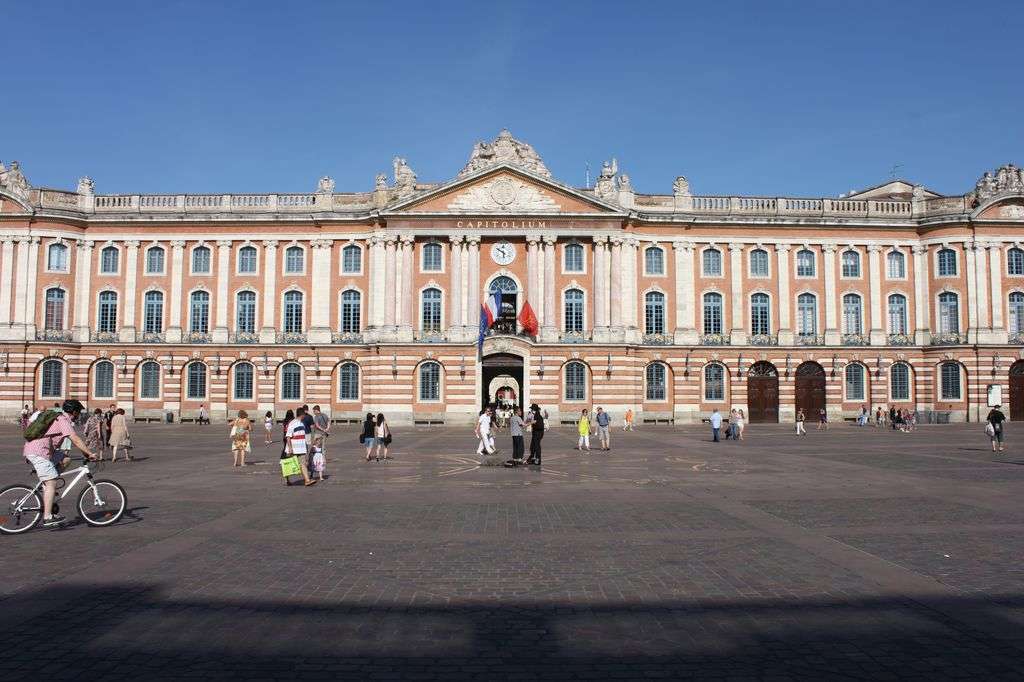
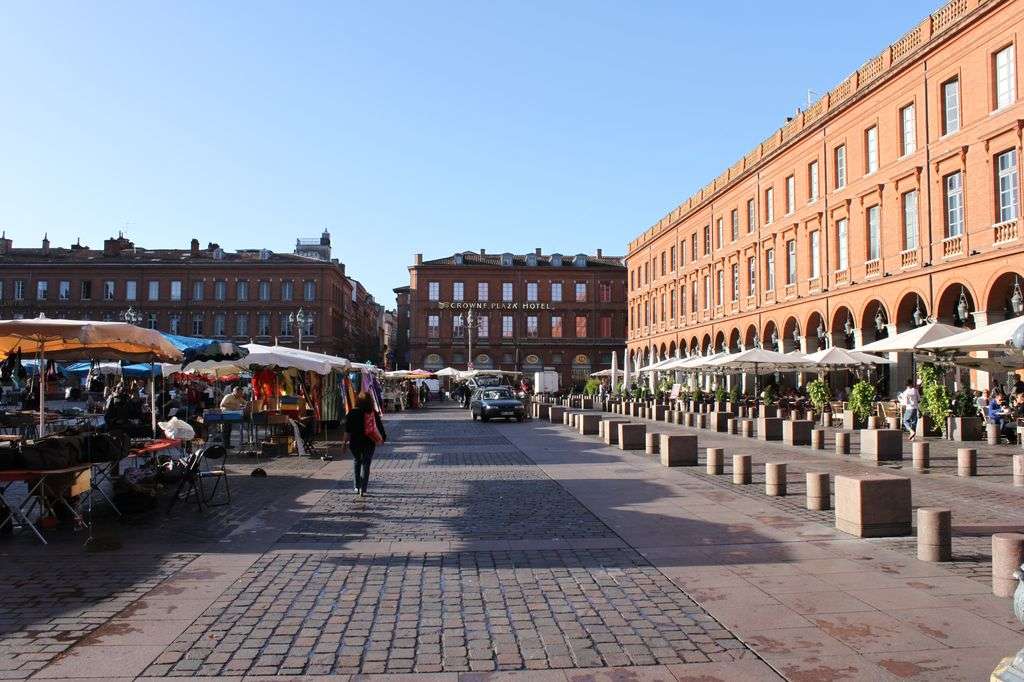
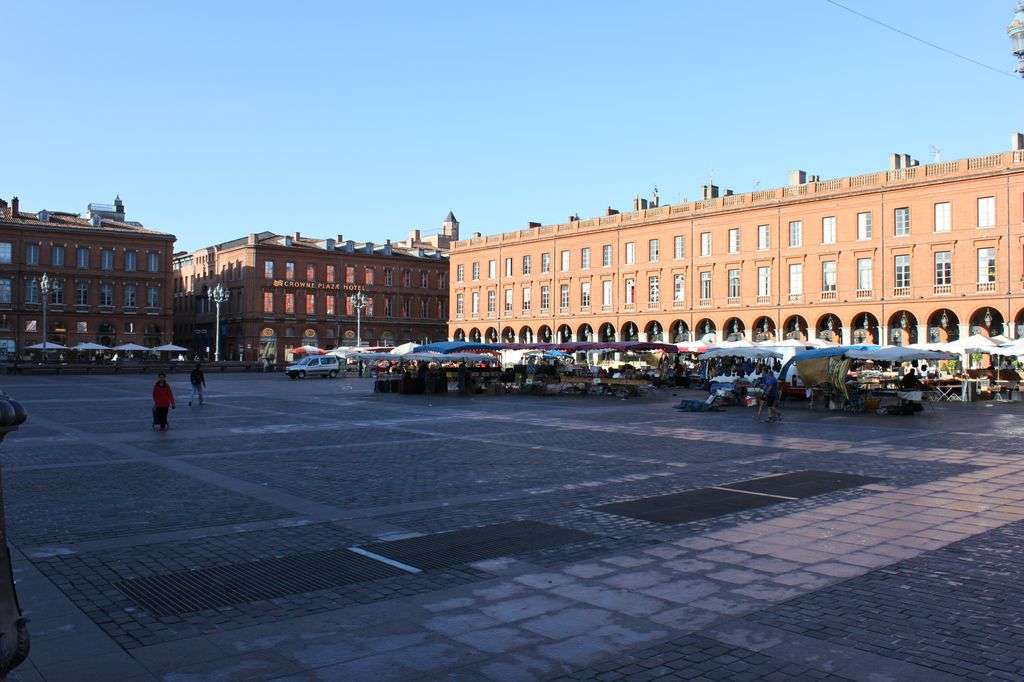

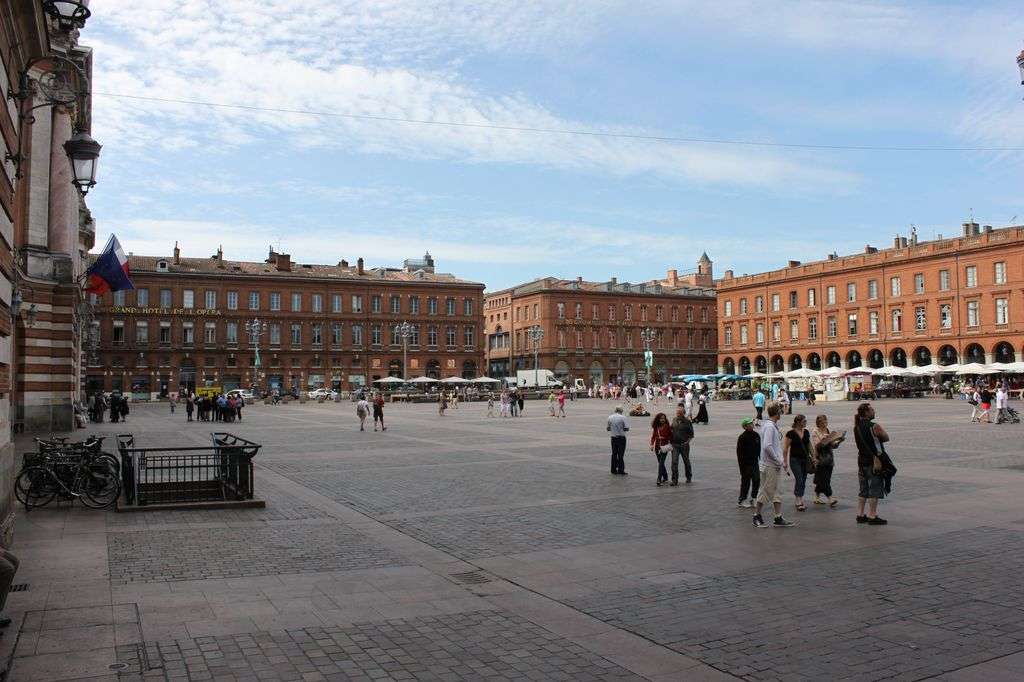
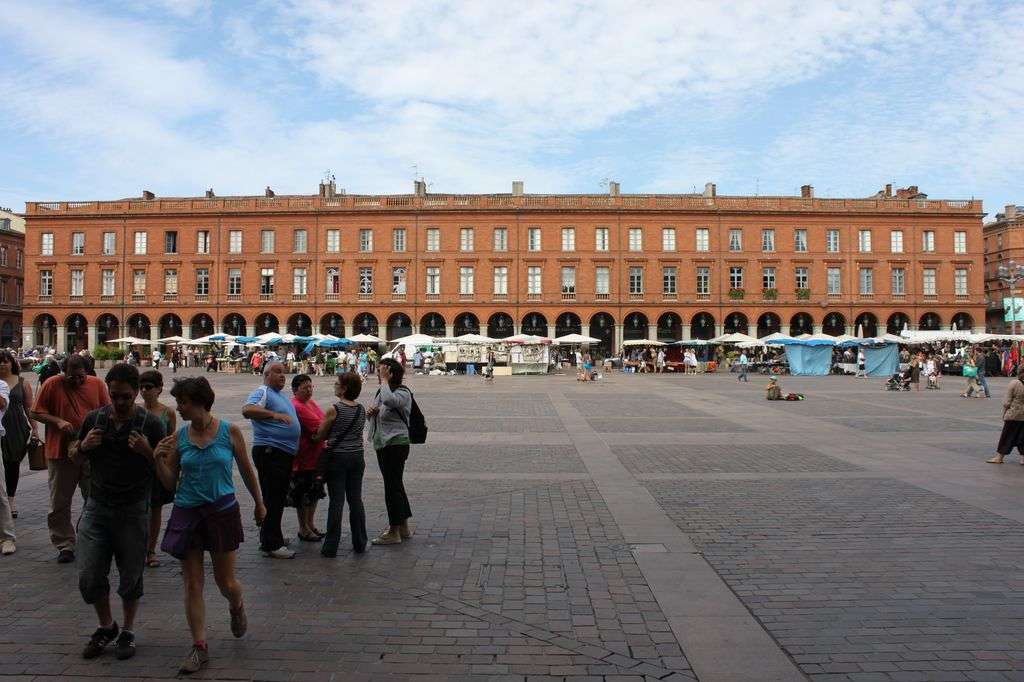

This painting represents the very first session of l’Académie des Jeux floraux ("Academy of the Floral Games") which is the most ancient literary institution of the western world. It was founded in 1323 by Clémence Isaure with the goal of encouraging poetry. It still exists today :

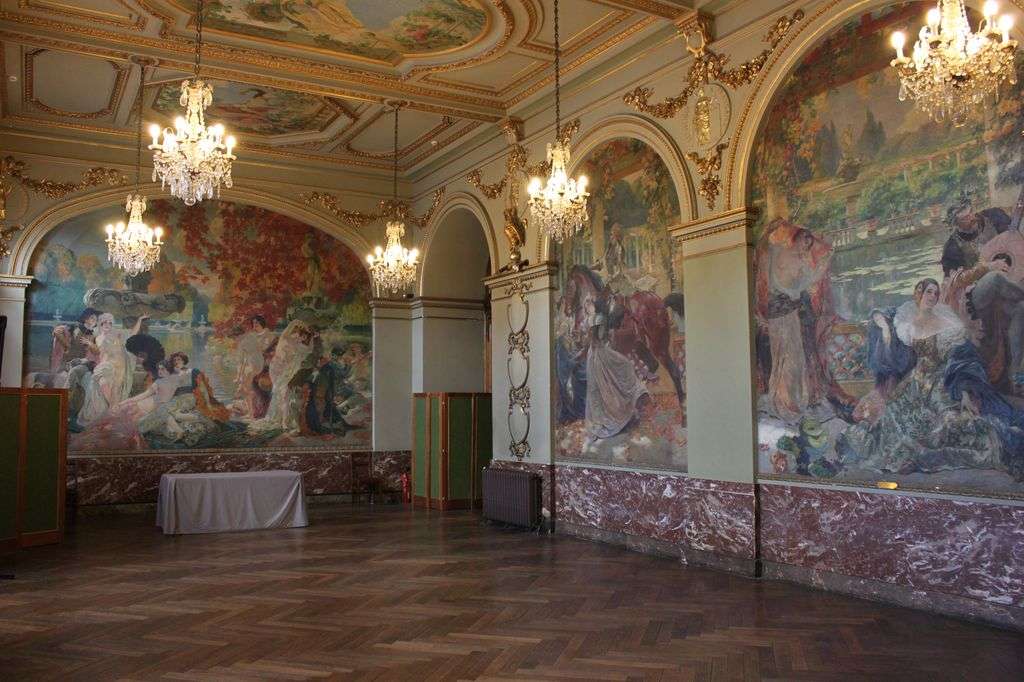

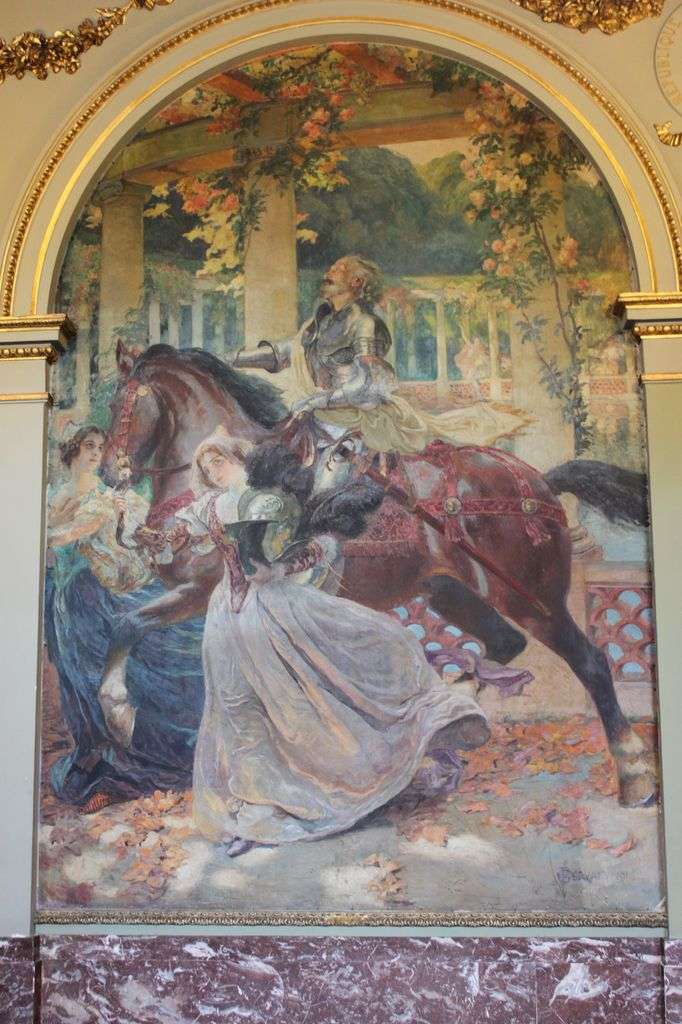





This painting represents pope Urban II entering Toulouse in 1096, he was preaching the first crusade. Raimond IV (represented as the soldier who guides the papal horse), count of Toulouse, became one of the leaders of this crusade.
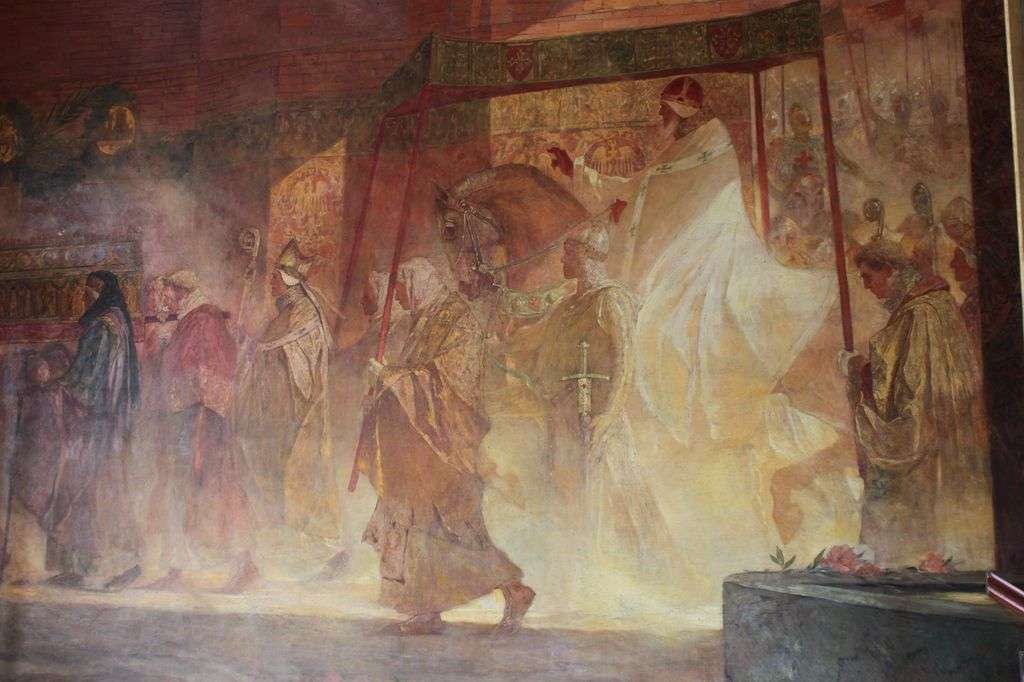
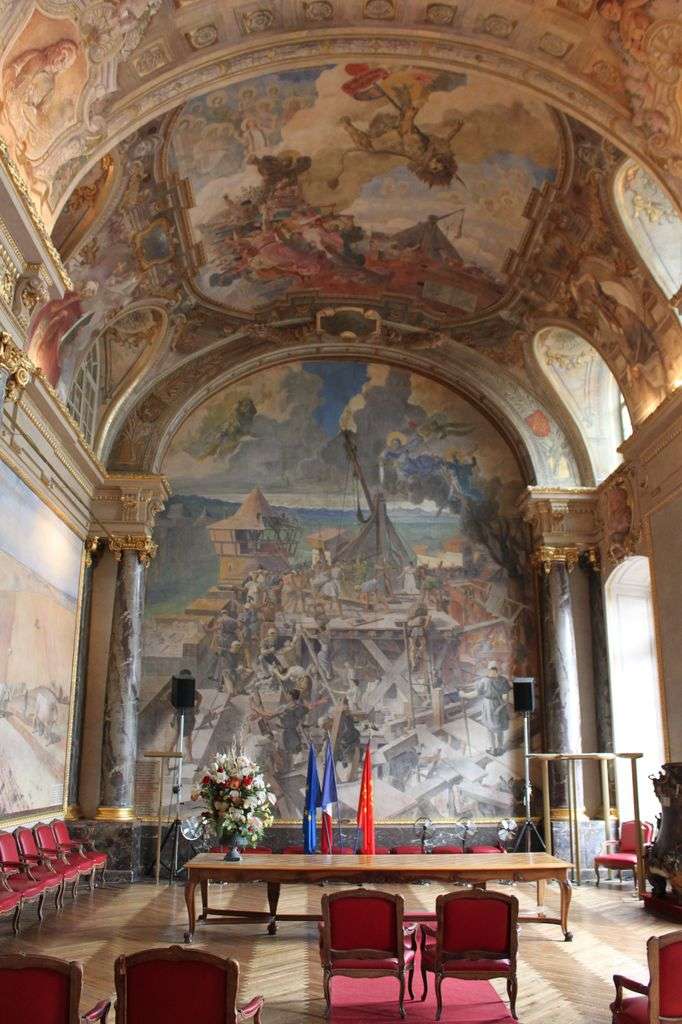
The 13th Century saw the rise of Catharism, which led to several years of disorder. A siege of Toulouse occurred between October 1217 and June 1218 during Albigensian Crusade. It was third of a series of sieges of the city during the height of Crusader efforts to put down Catharism (and the local Languedocian nobility). It ended in the repulsion of the Crusaders and the death of their leader, Simon IV de Montfort; hit on the head by a stone from one of the defenders' siege engines maneuvered by a woman.
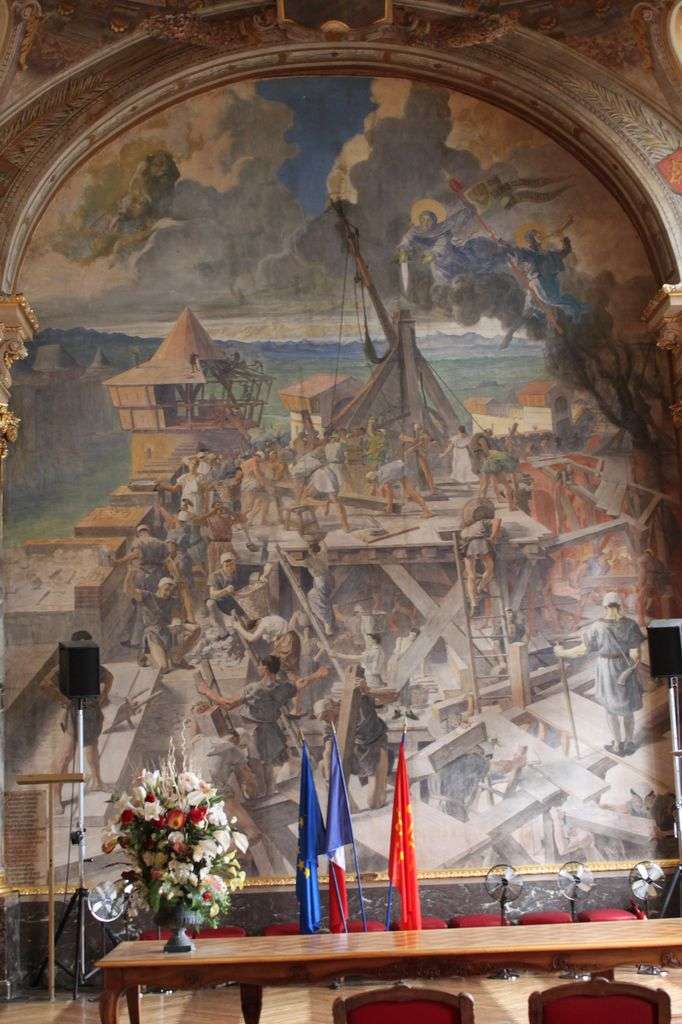
Paule de Viguier (1518-1610) was widely considered to be the most beautiful woman of her time. The Maréchal de Montmorency called her “one of the marvels of the universe.” At the age of 15, she produced a strong impression on king François I visiting Toulouse, he gave her the nickname of “Belle Paule” (beautiful Paule).
The Capitouls of Toulouse, under popular pressure, had to oblige her to appear at regular intervals at her balcony to calm the heated spirits. Posterity has not left us with any portraits of her. This one can be found in the Capitole in the “Salle des Illustres.”, it was painted by Henri Rachou in 1882. One never knows if it reflects the truth.
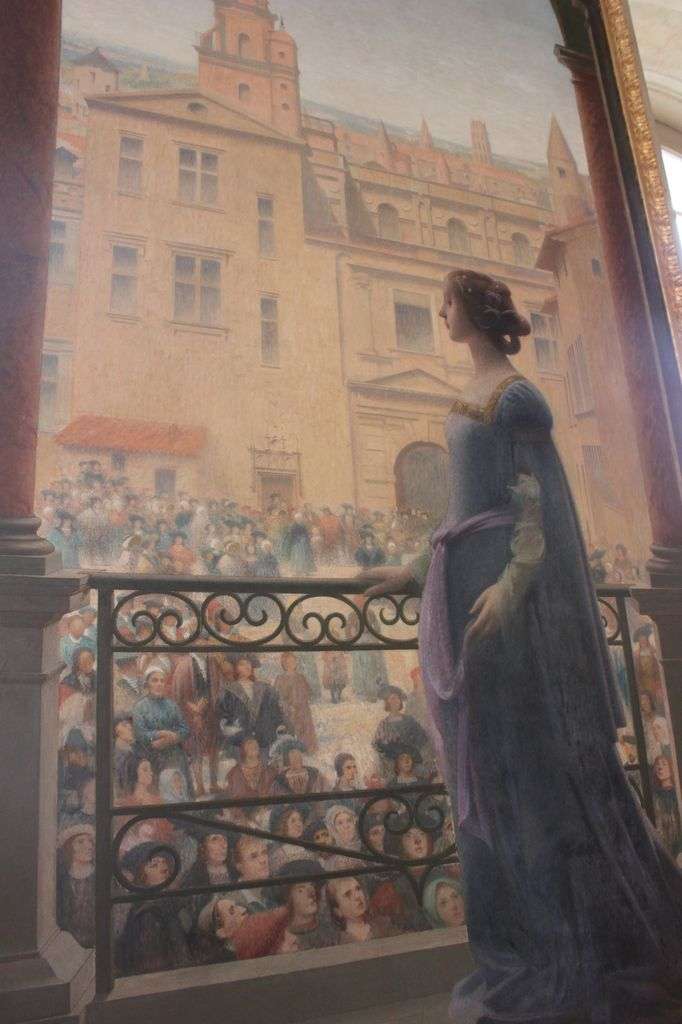
Only the Henri IV courtyard and gate survive from the original medieval buildings.
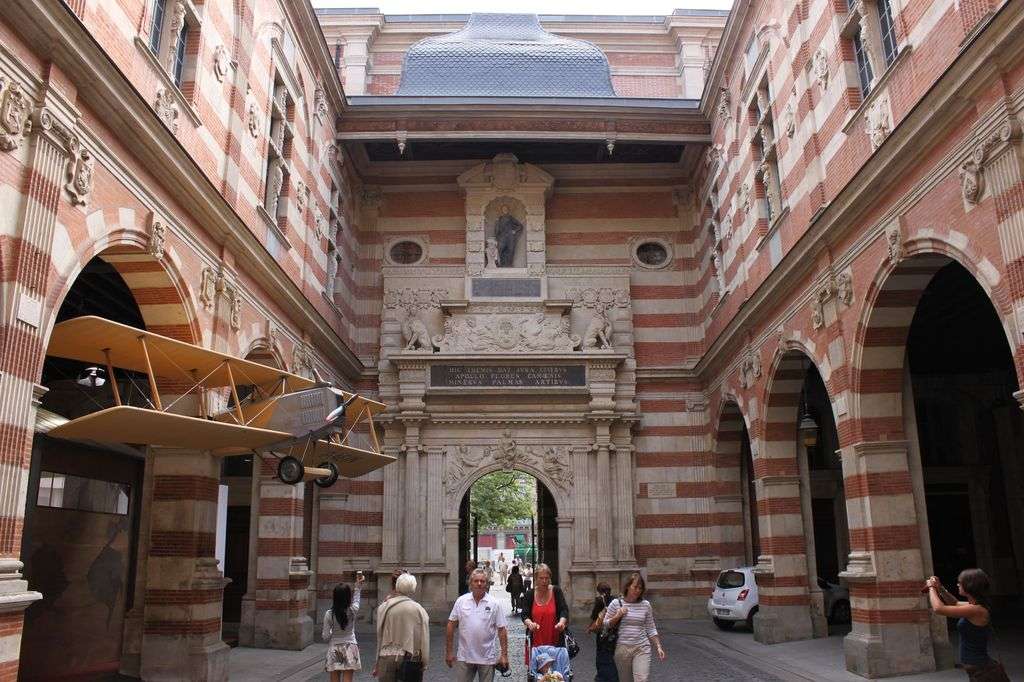
Saint Sernin basilica is one of the biggest remaining romanesque church in the western world. It was built mainly between years 1080 and 1120. It is said to have the most important collection of relics of Europe, including that of Saint Saturnin, the martyred bishop of the city, to whom the church is devoted. Few Romanesque cathedrals have remained intact as St Sernin.
This monument is an essential stage on the Saint-Jacques-de-Compostelle pilgrimage.
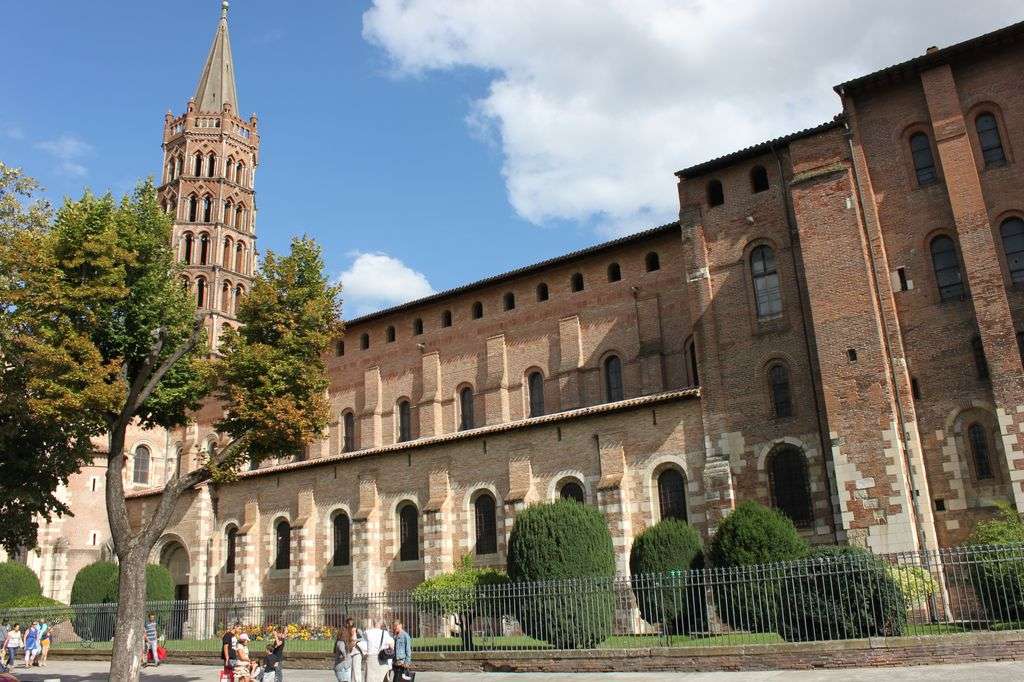

The tympanum of the Porte Miegeville. It depicts the Ascension in quite a literal manner, with angels hoisting Christ up into heaven by the waist. Below, the apostles look up in wonder while two angels explain that he will return from heaven in the same way :

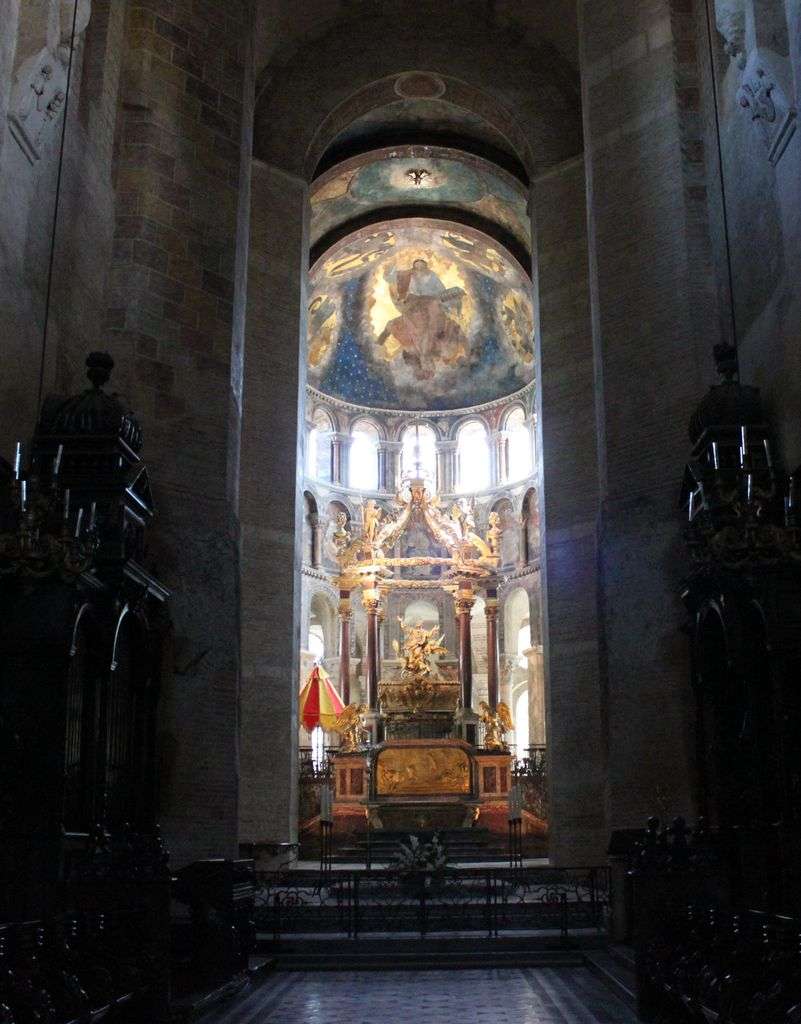
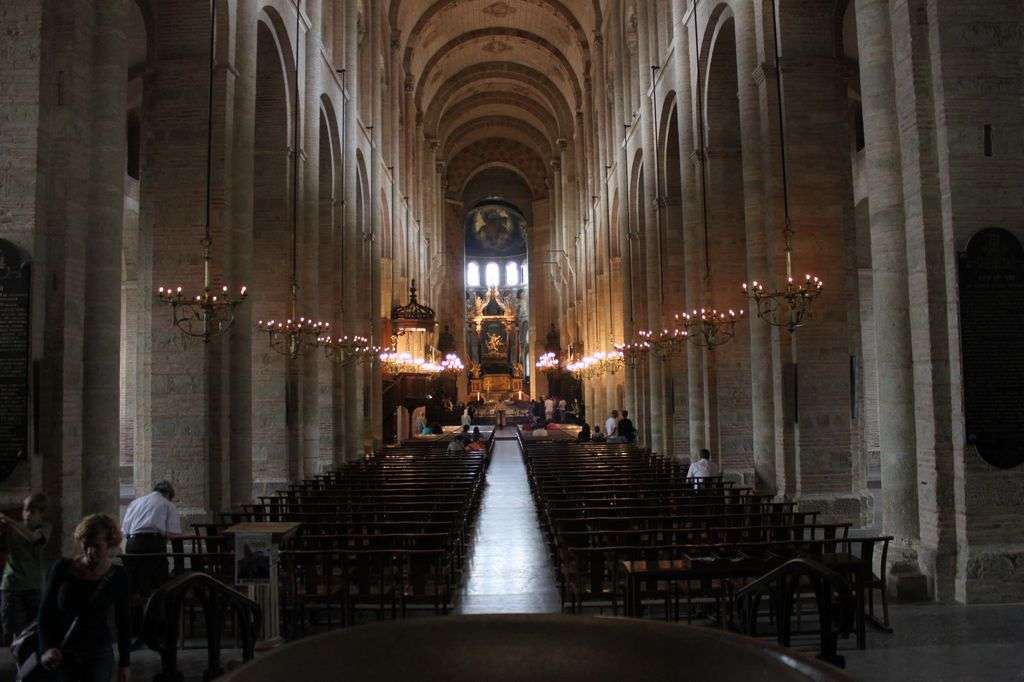
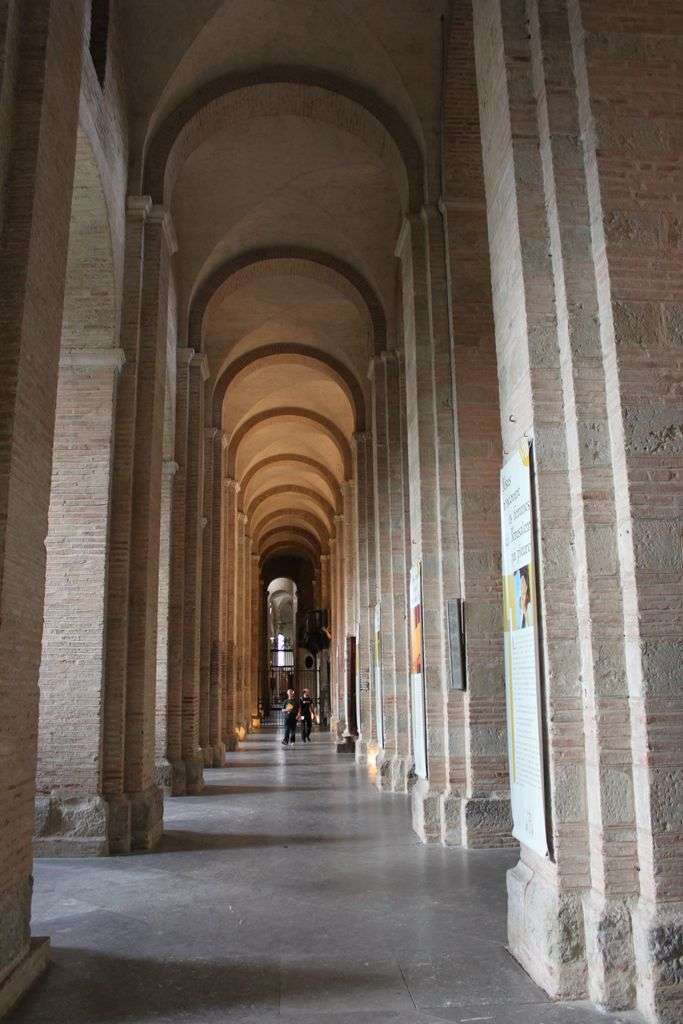
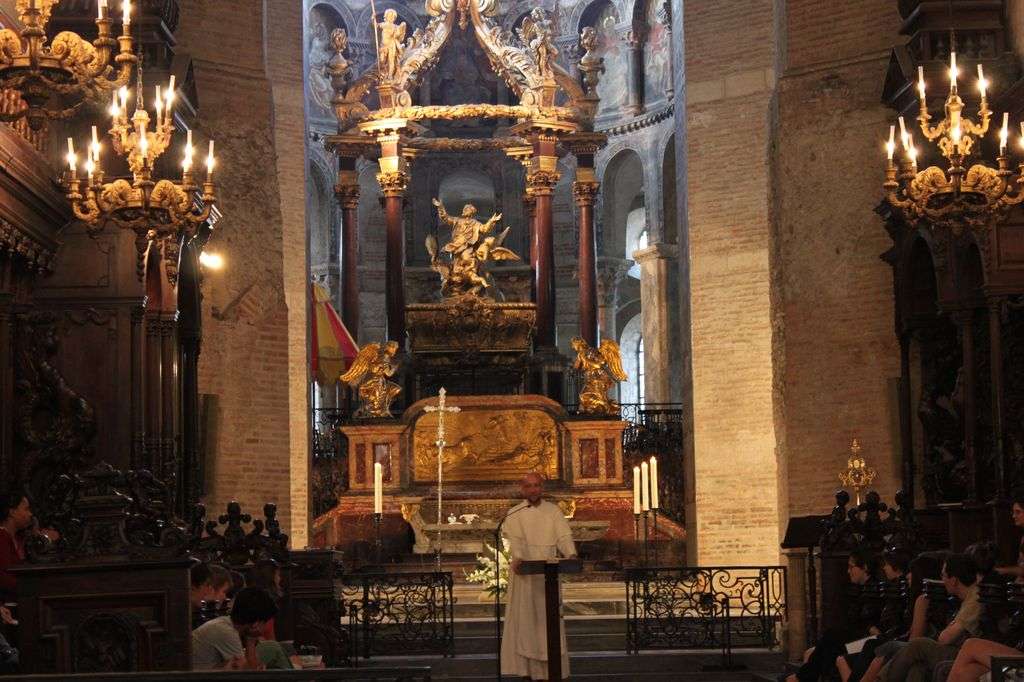
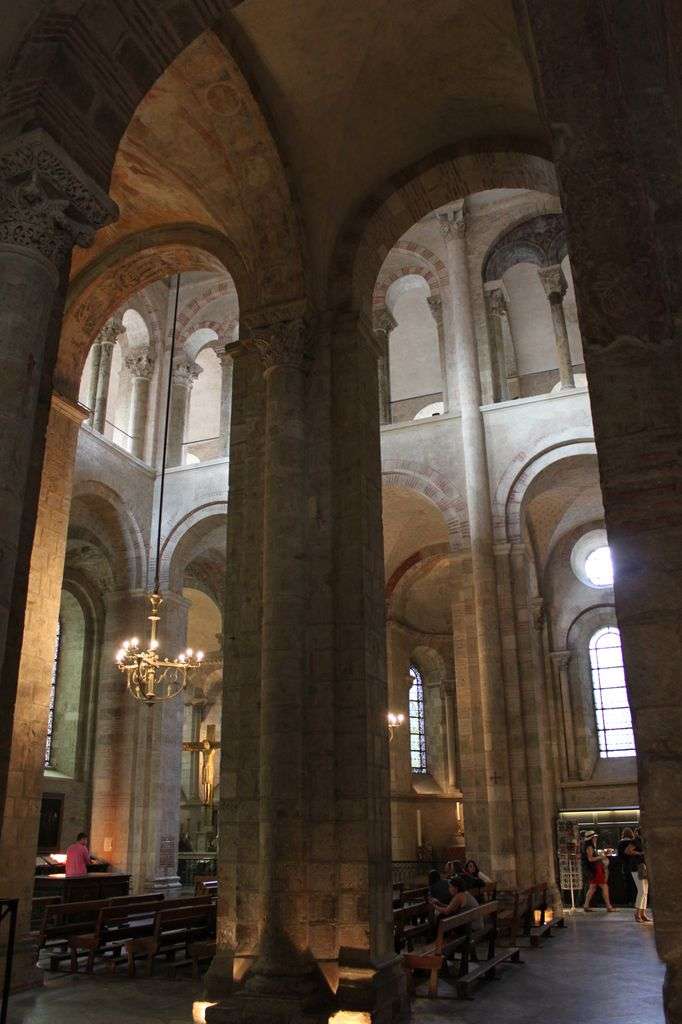
Romanesque paintings that were only discovered in the 1970s, when the 19th-century plaster was removed from the walls :
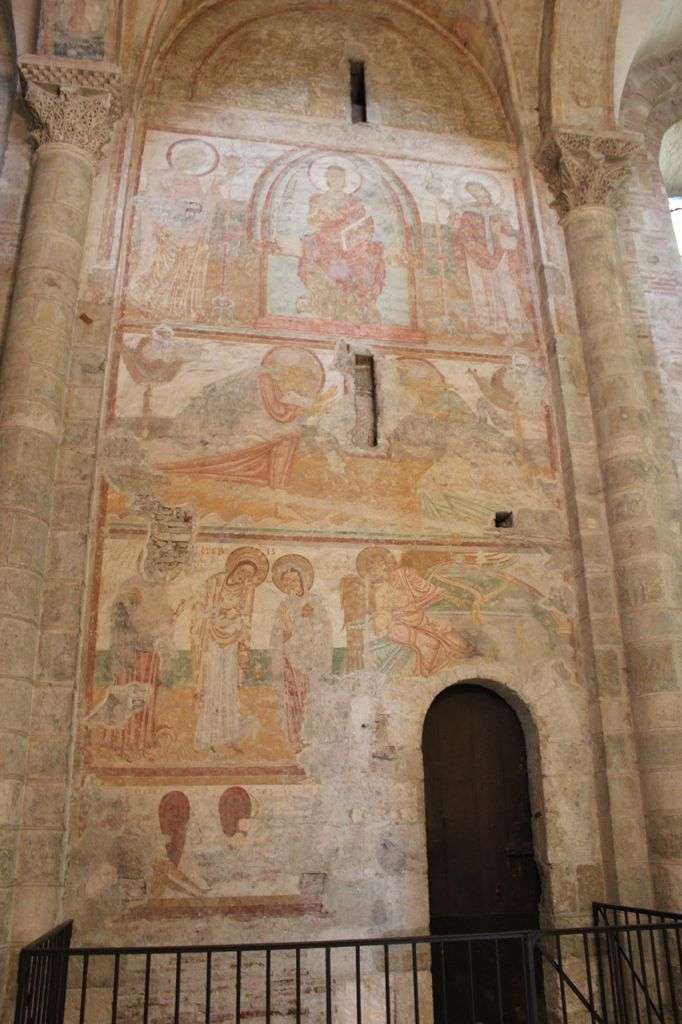
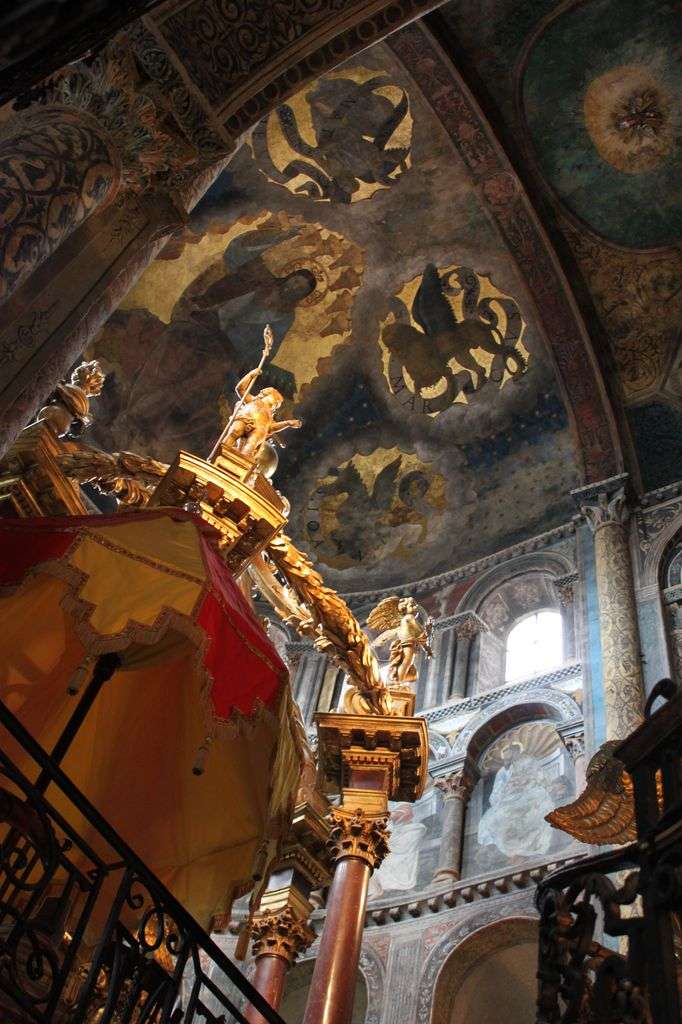
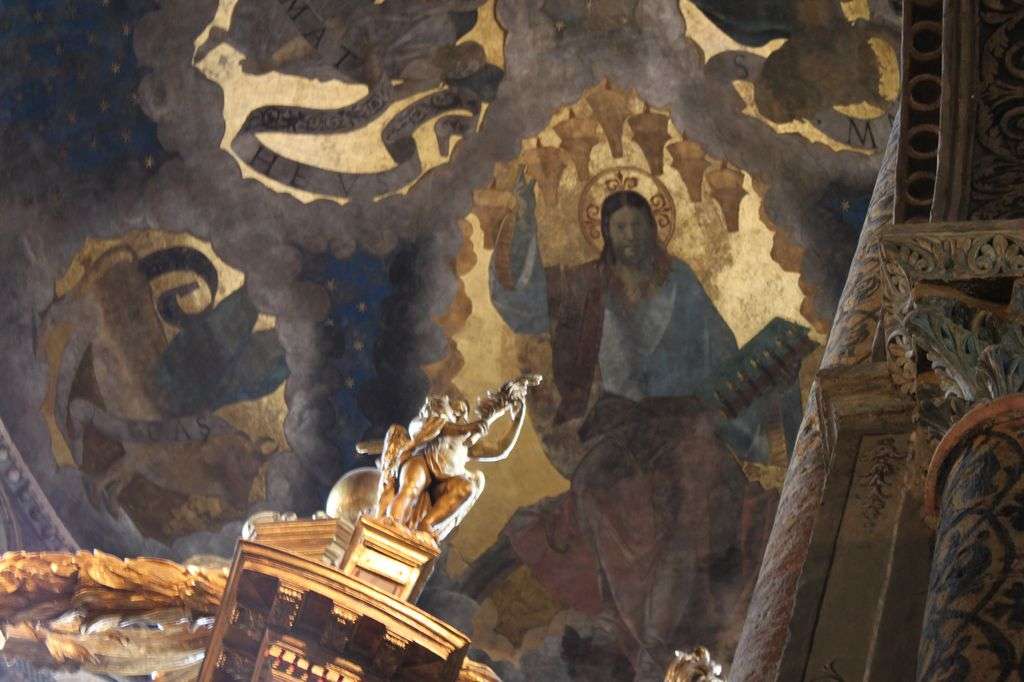
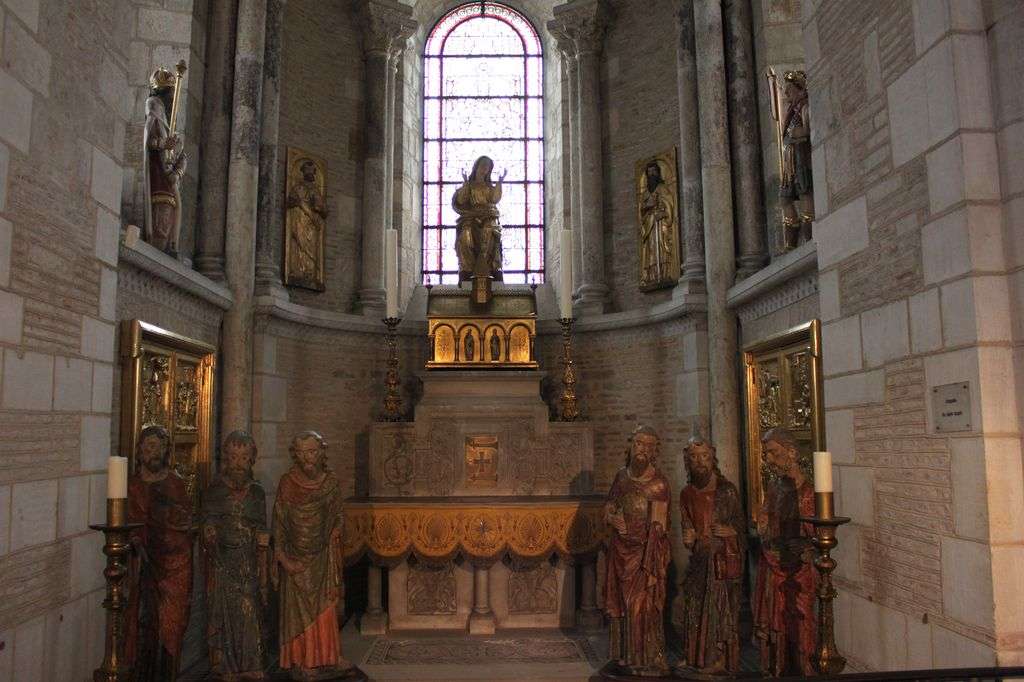
15th century paintings :
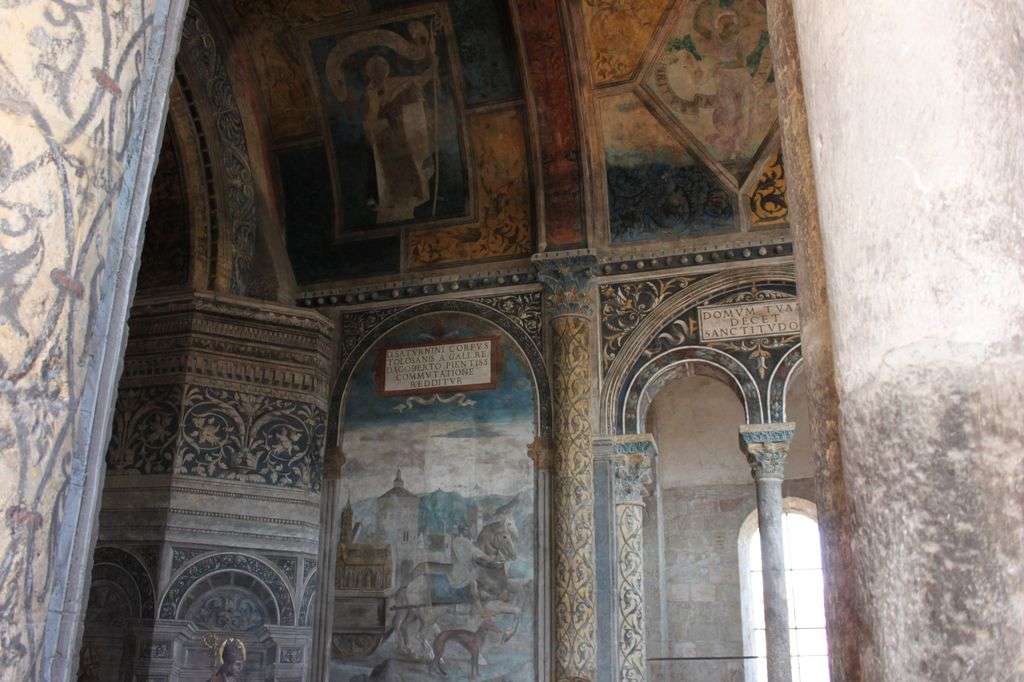
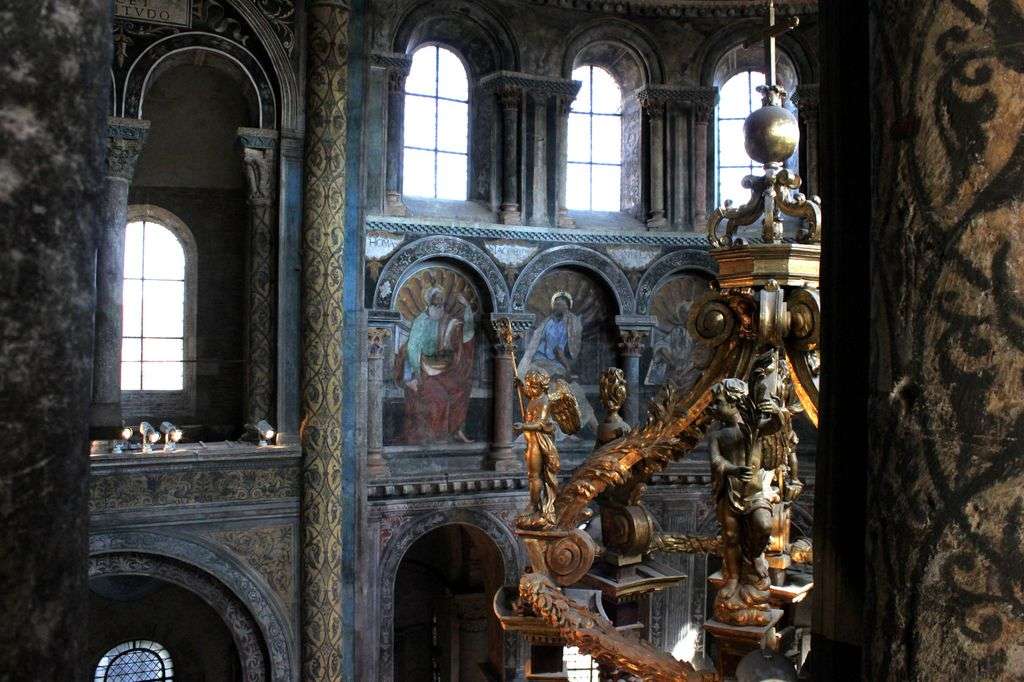
A romanesque Christ, notice that every foot has its nail :
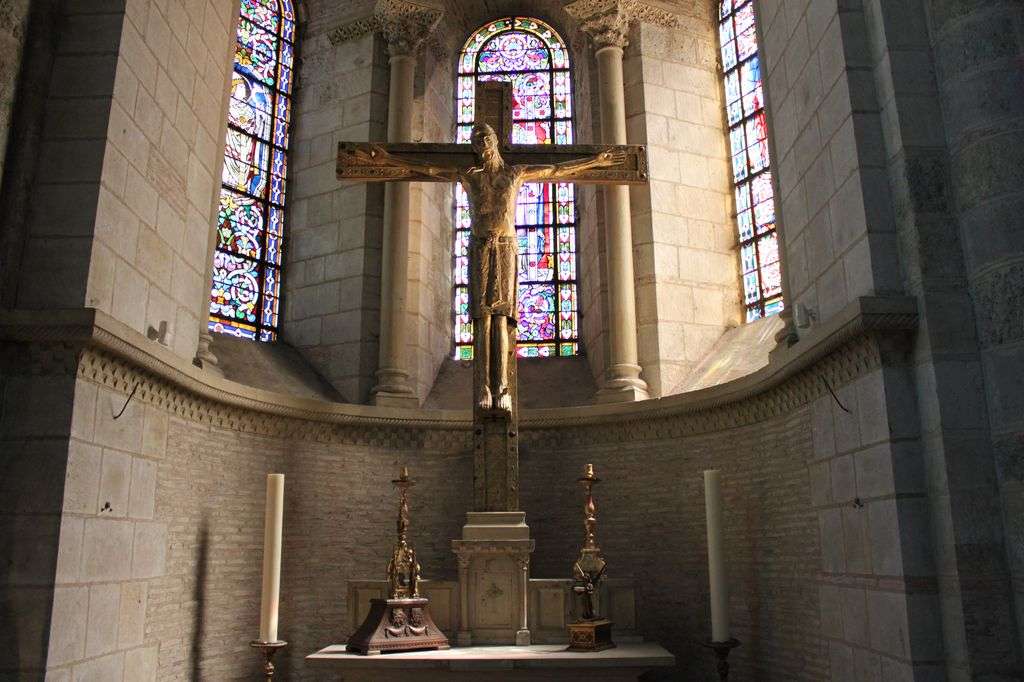
THE GARONNE RIVER
The Pont neuf (New bridge) is the oldest of the city. It was built from 1542 to 1632 and for centuries was the only bridge of Toulouse capable of resisting the violent floods of the Garonne.
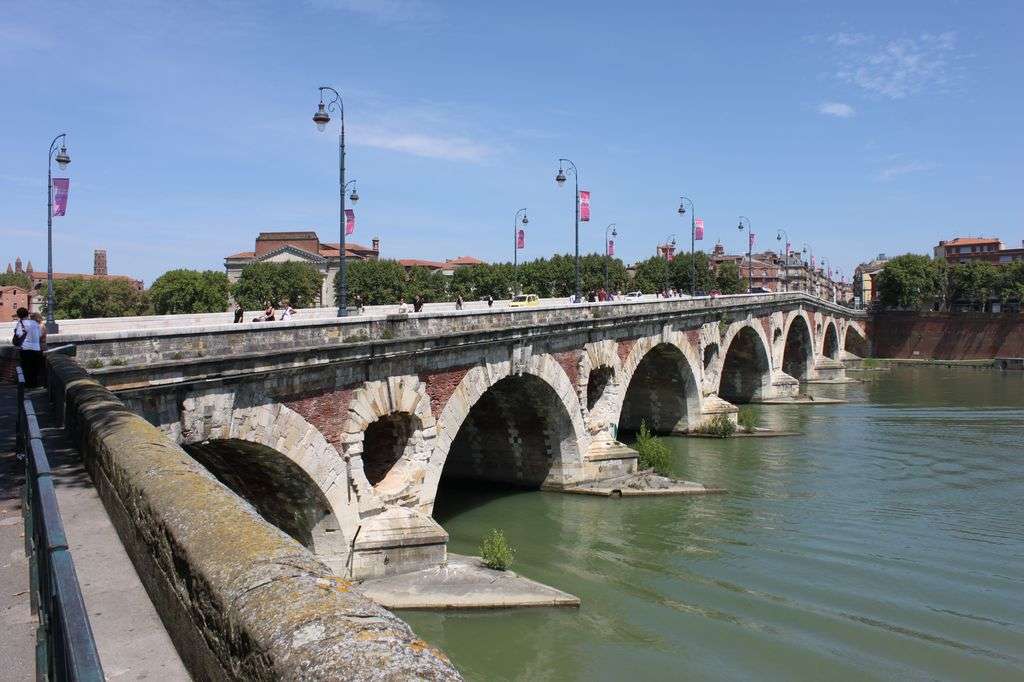
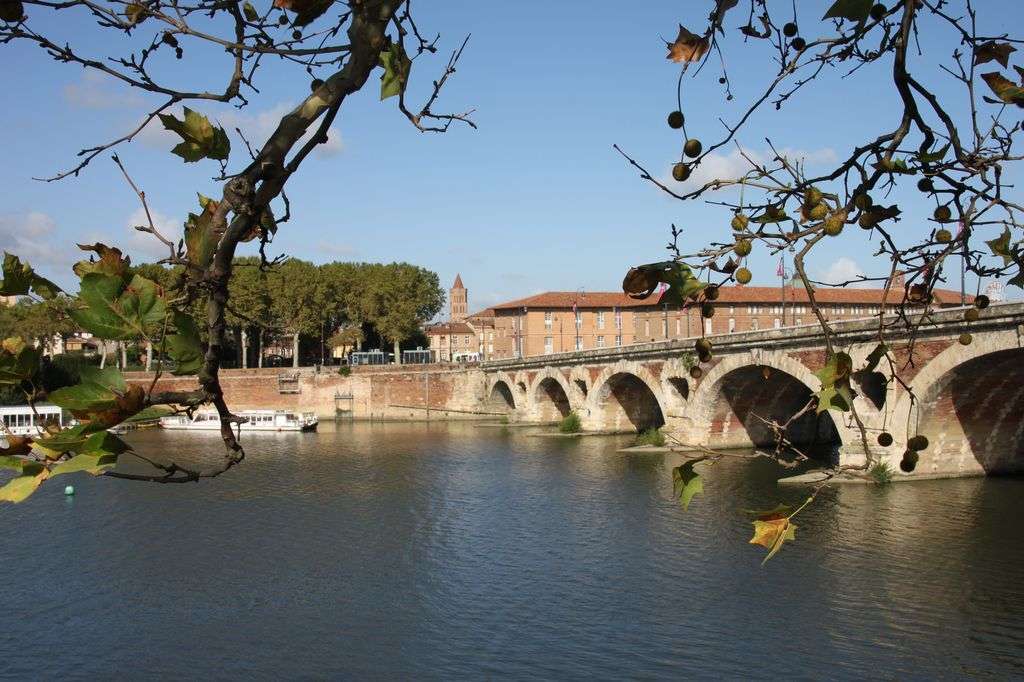
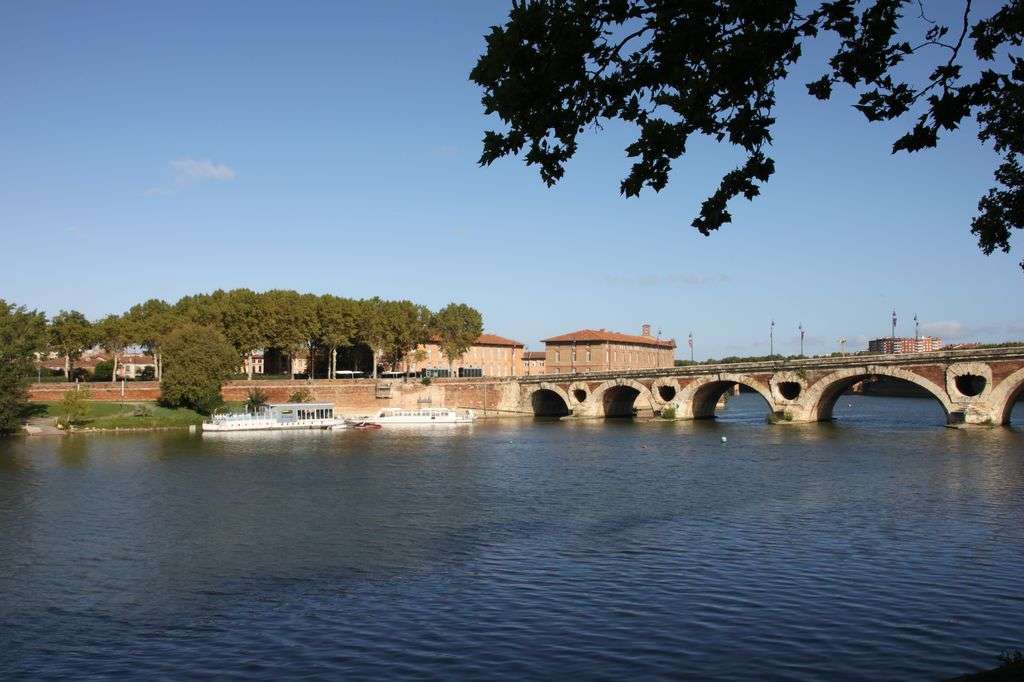
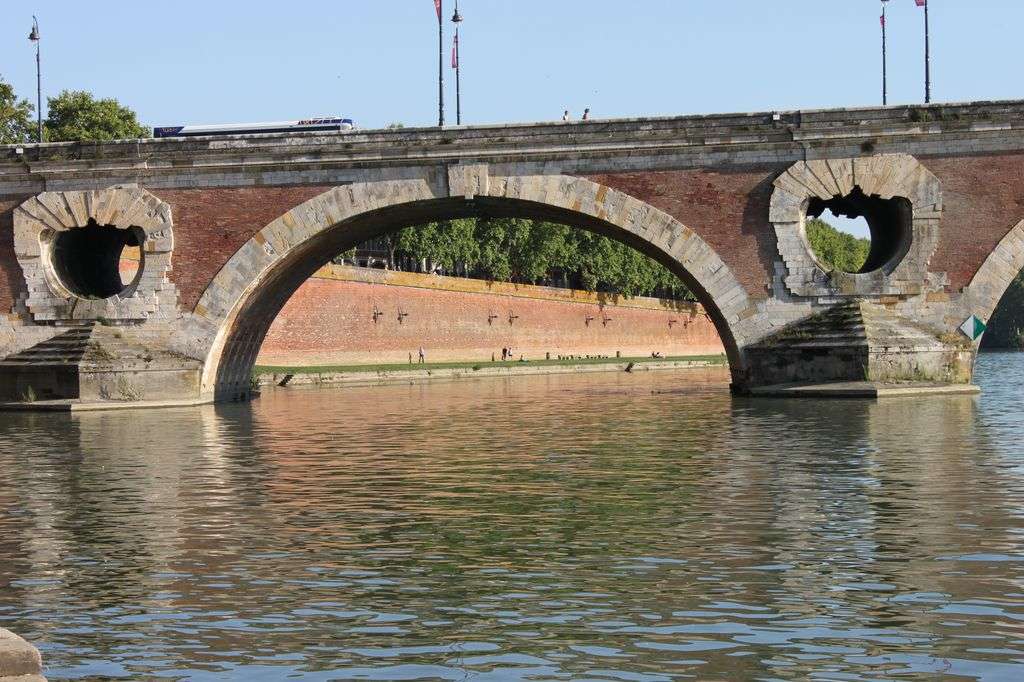
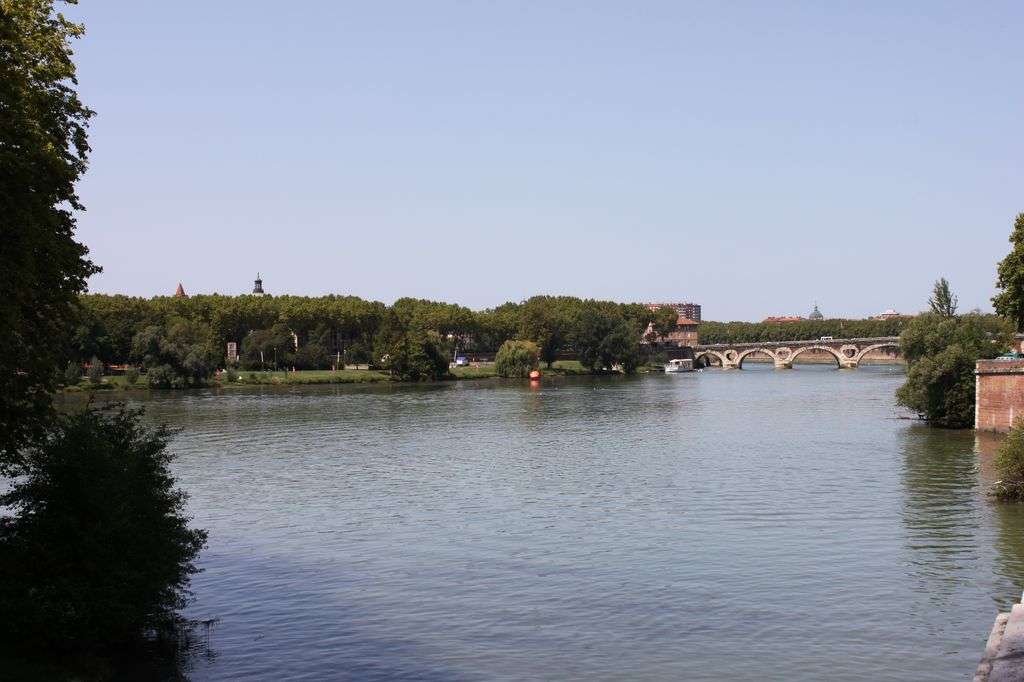
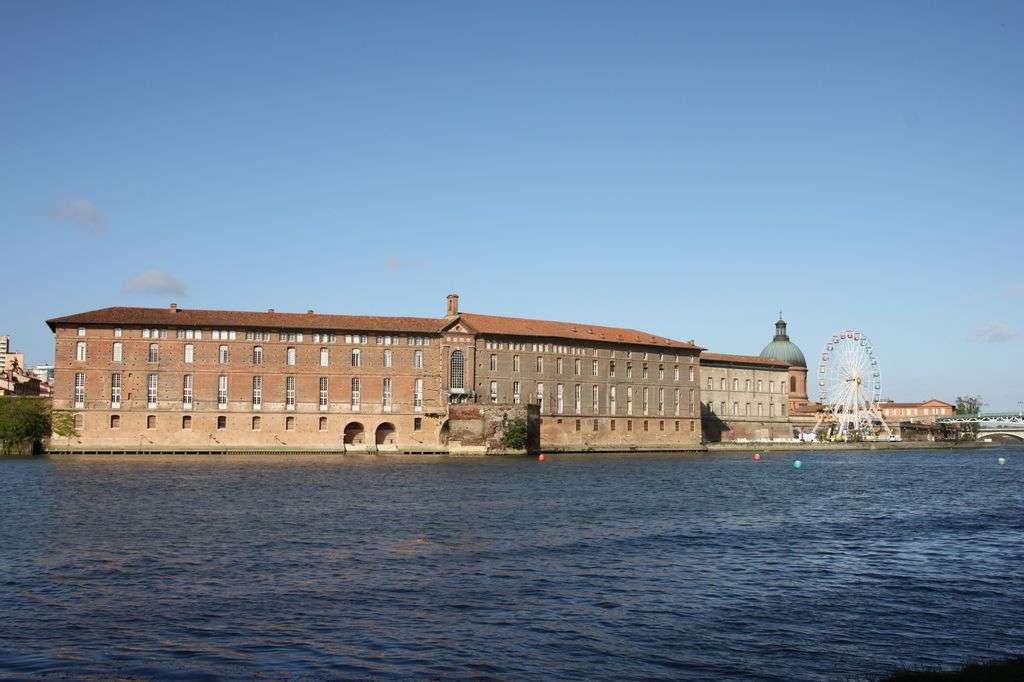

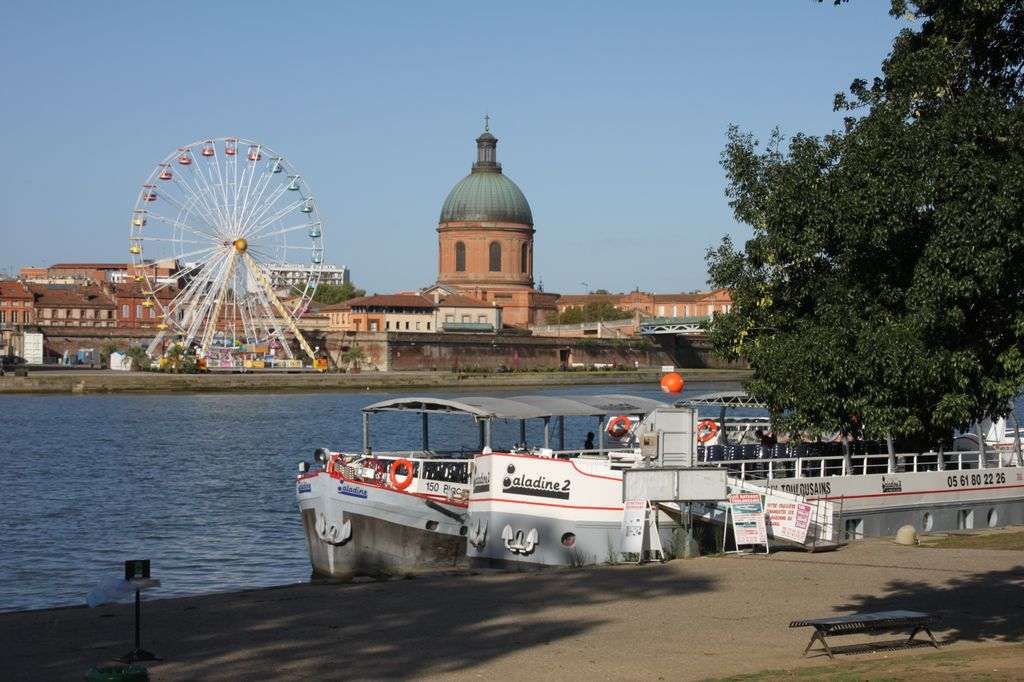
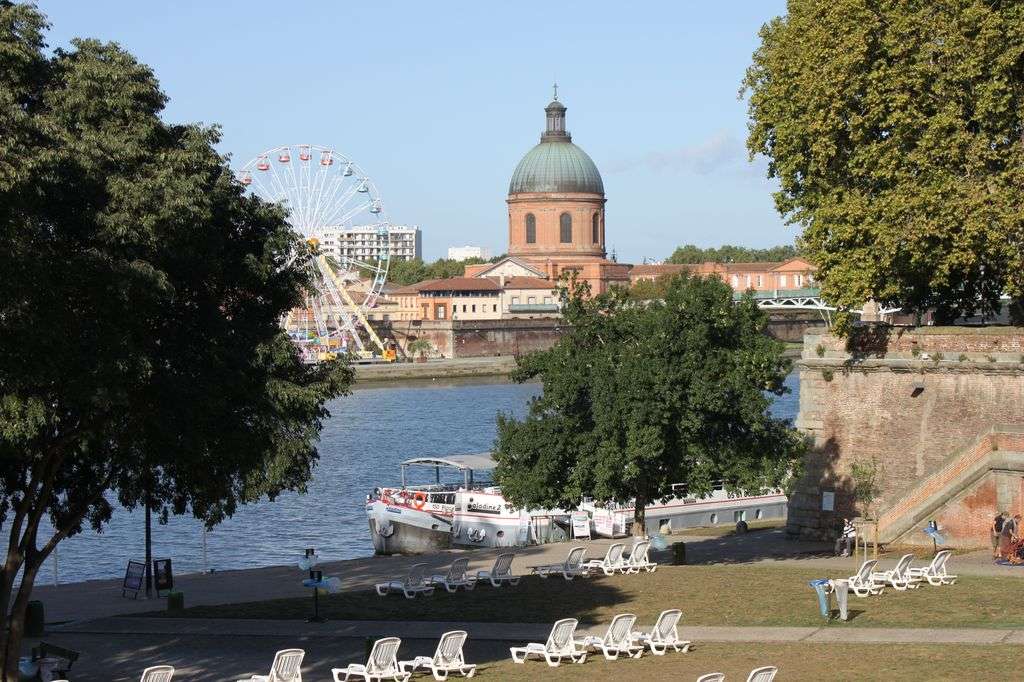
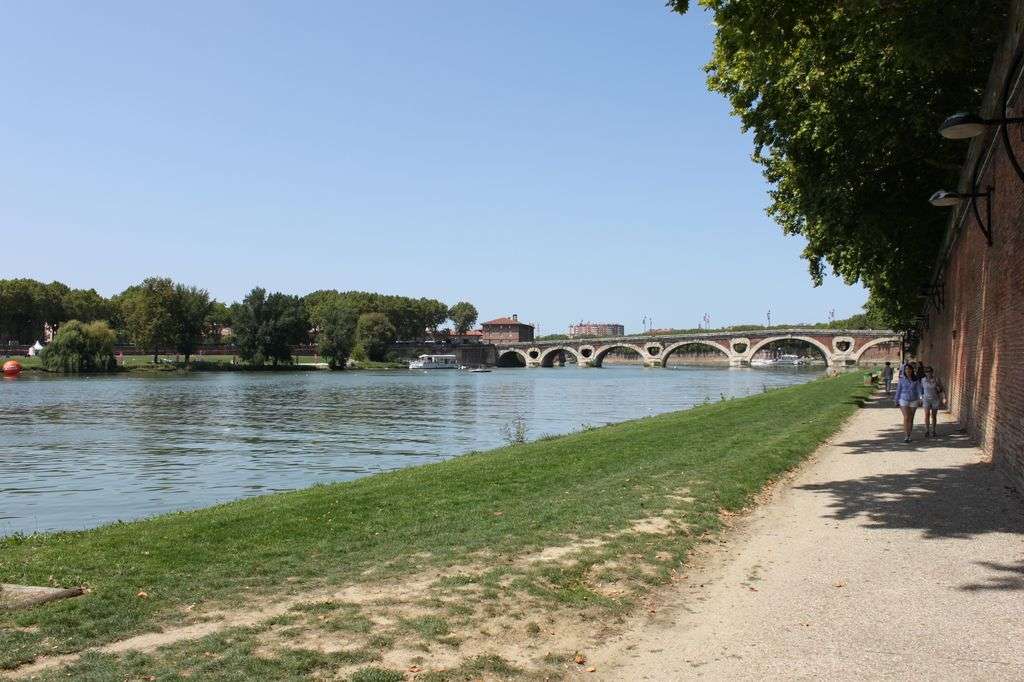

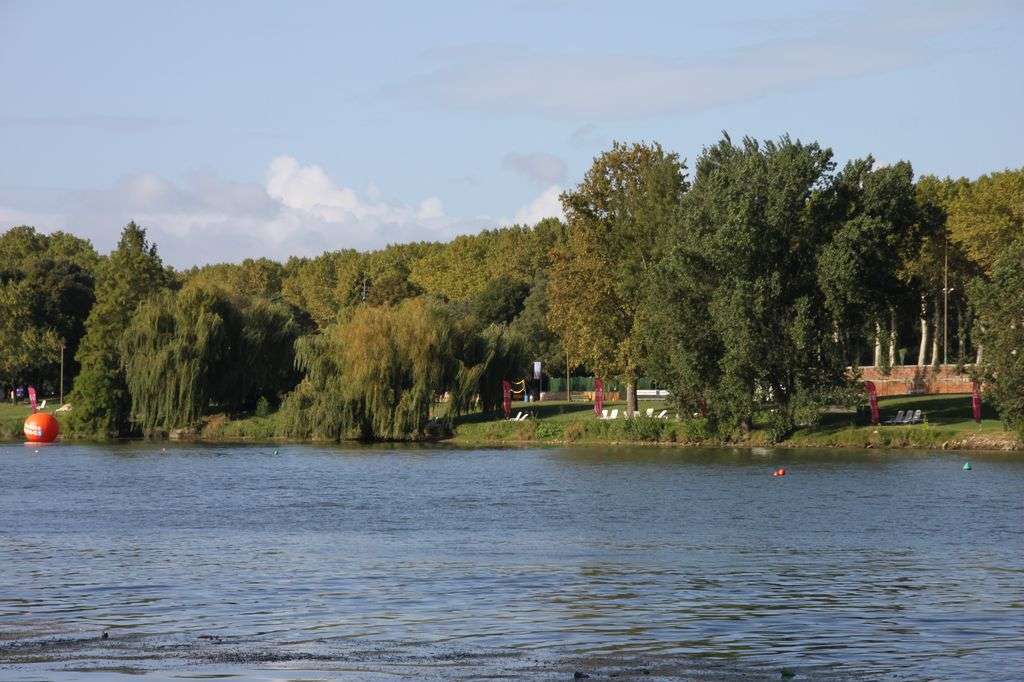

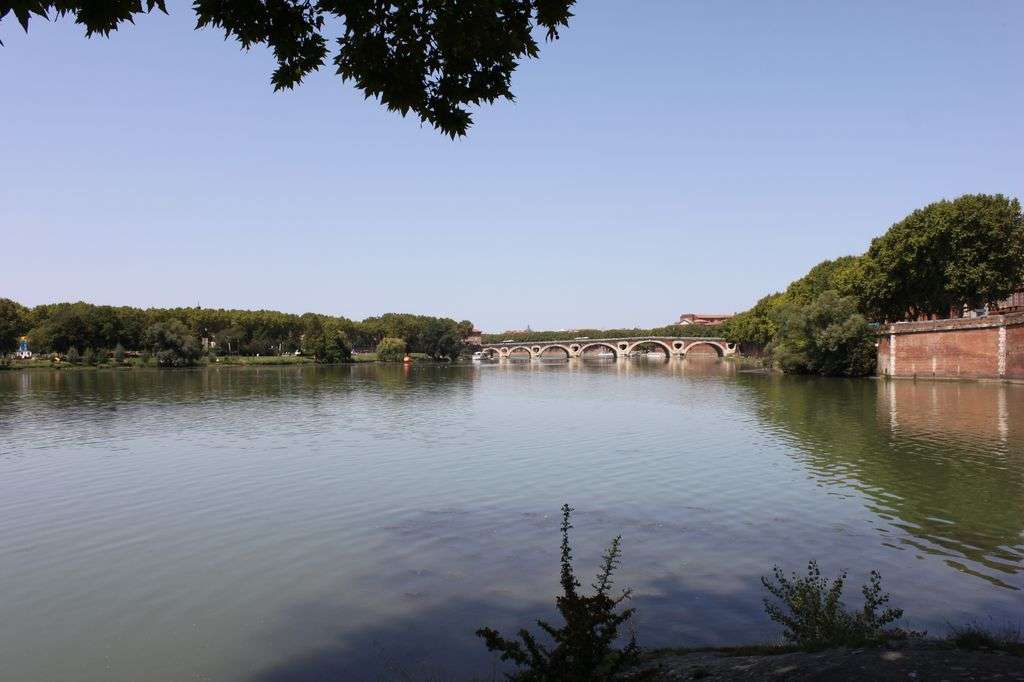


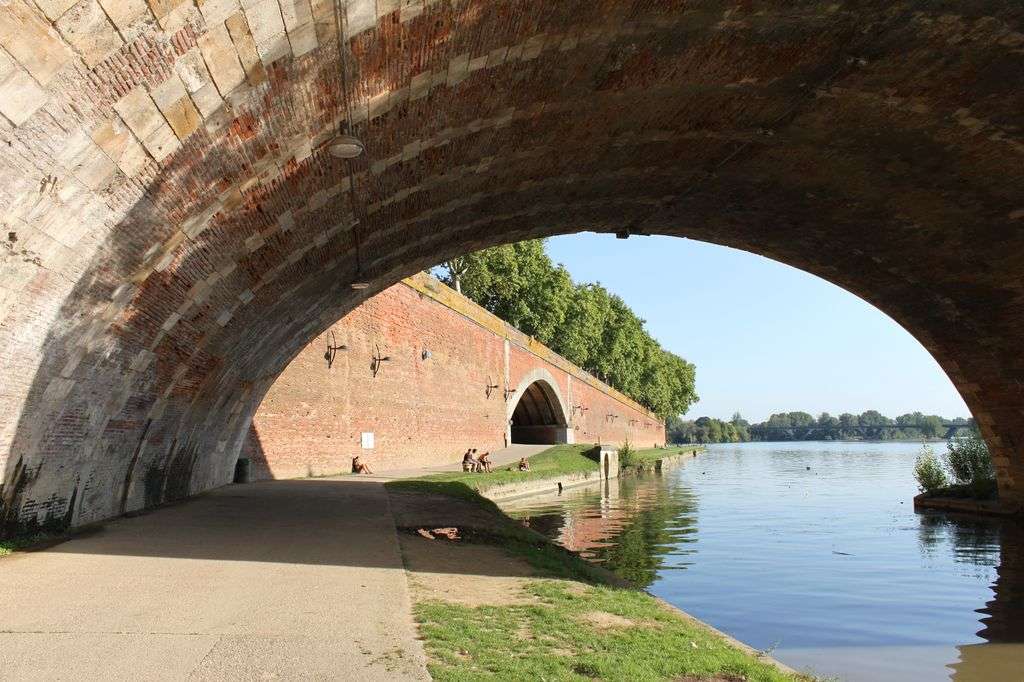
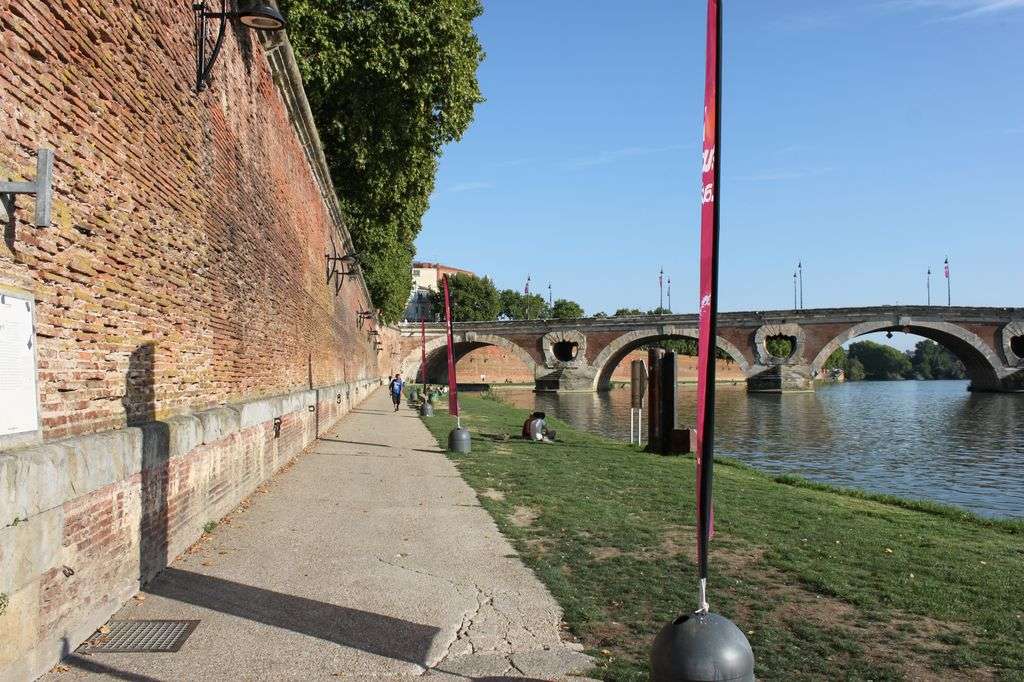


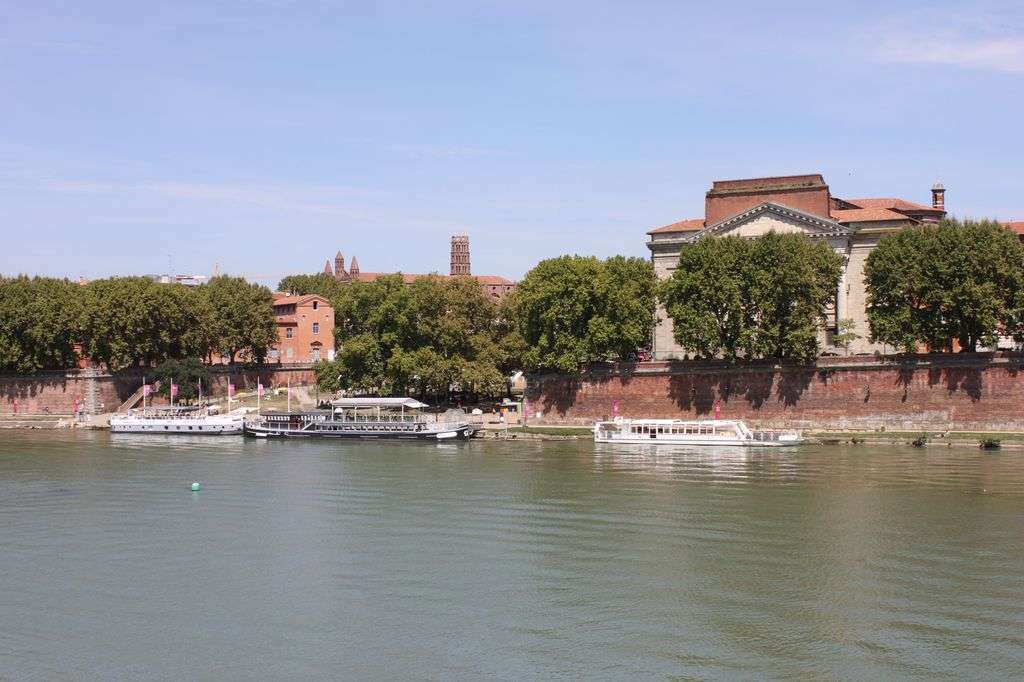
Here is a bridge which didn’t resist the Garonne :
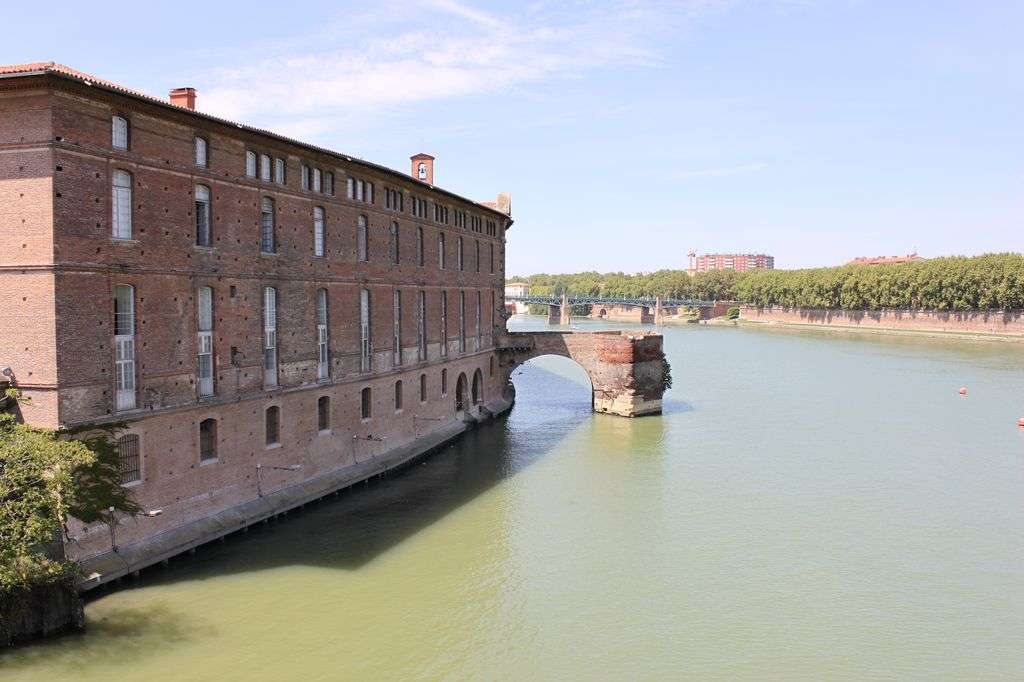

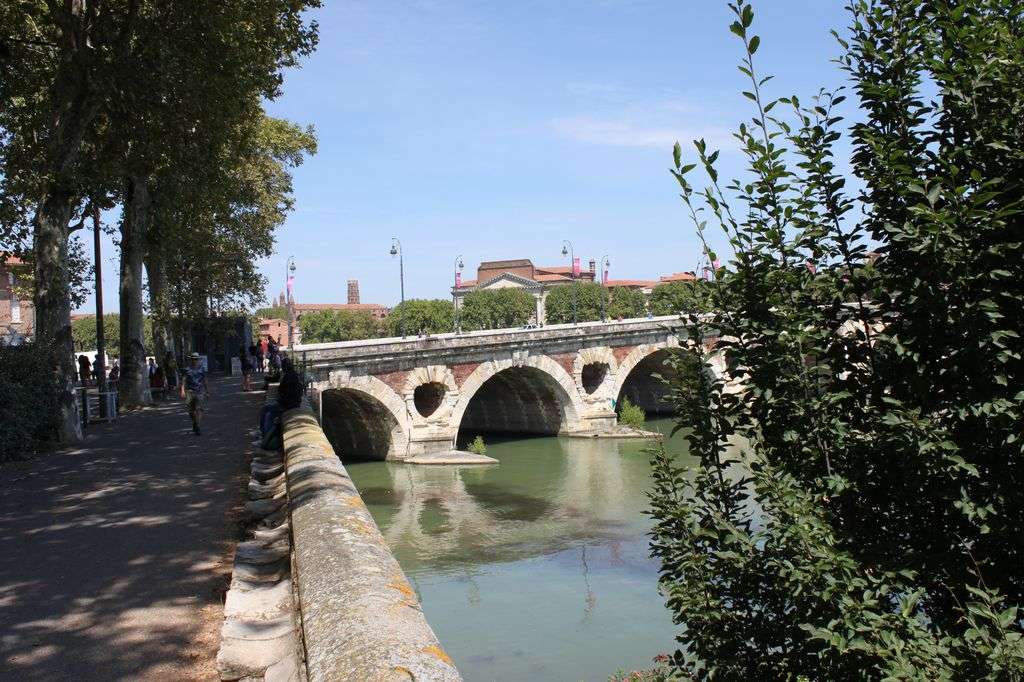
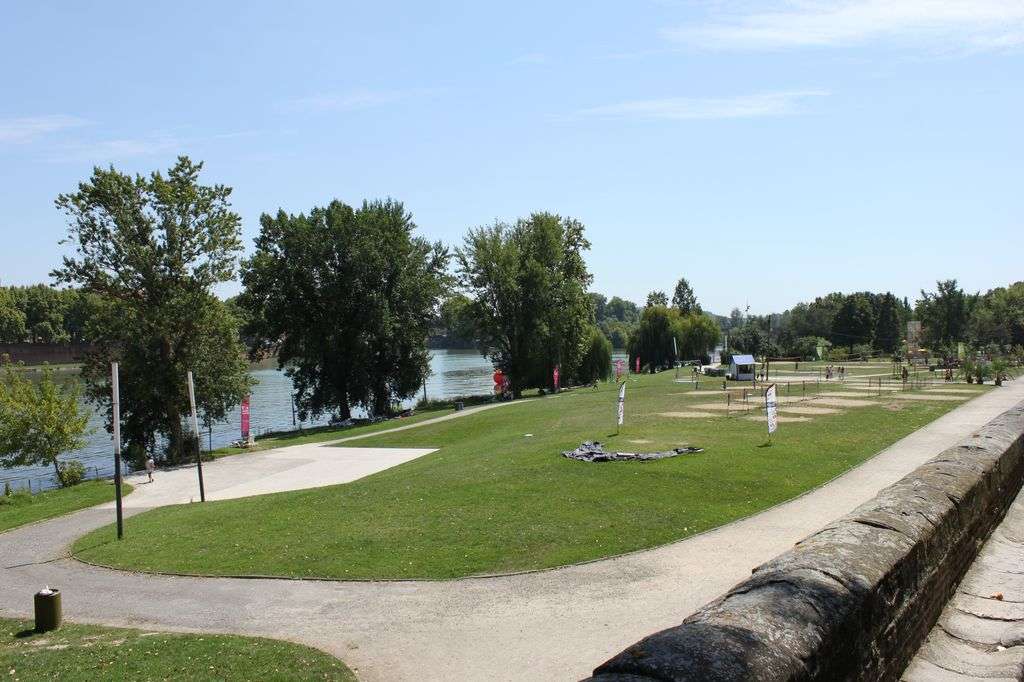
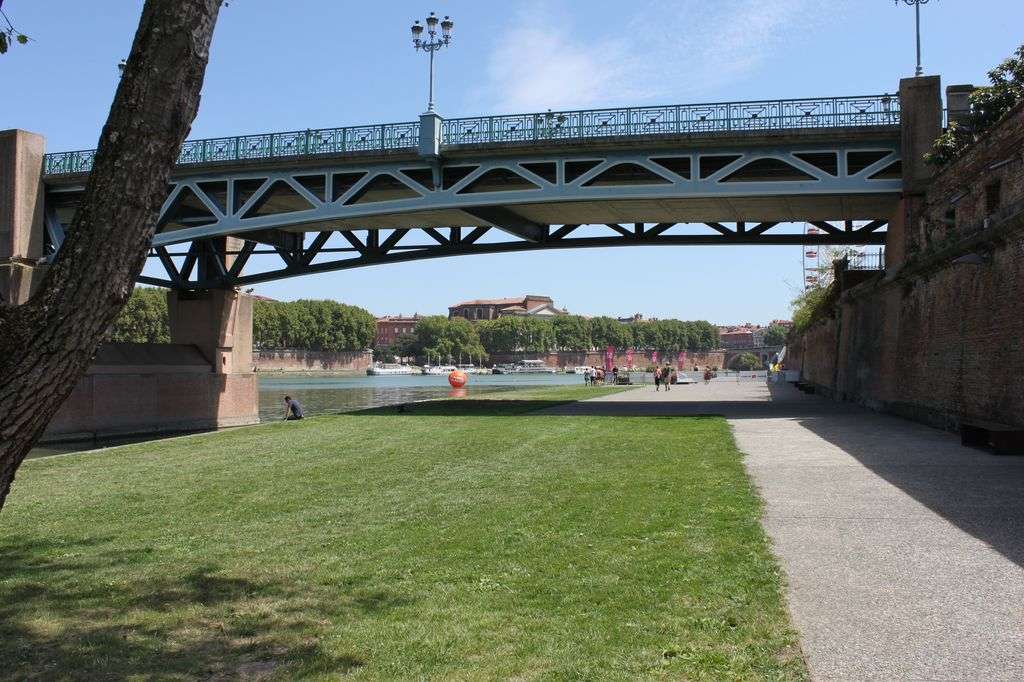
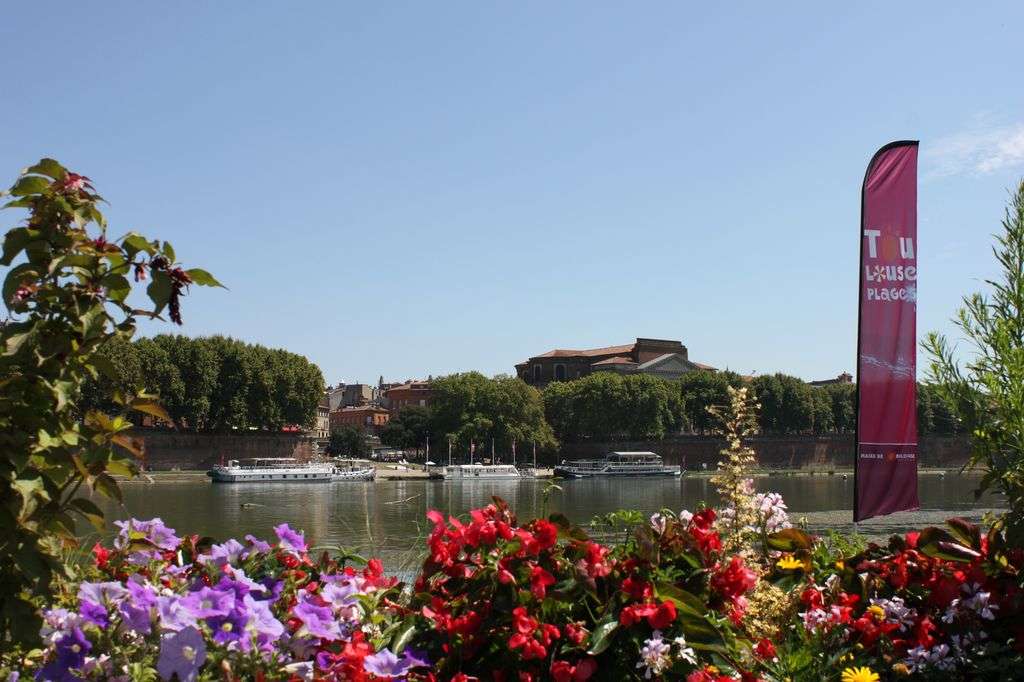
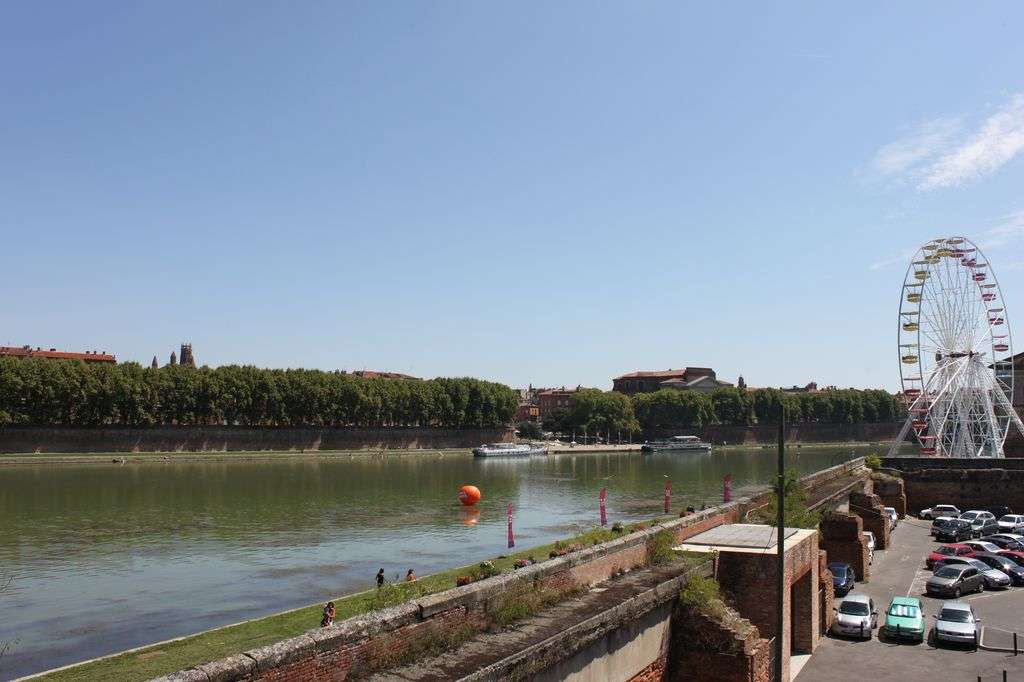

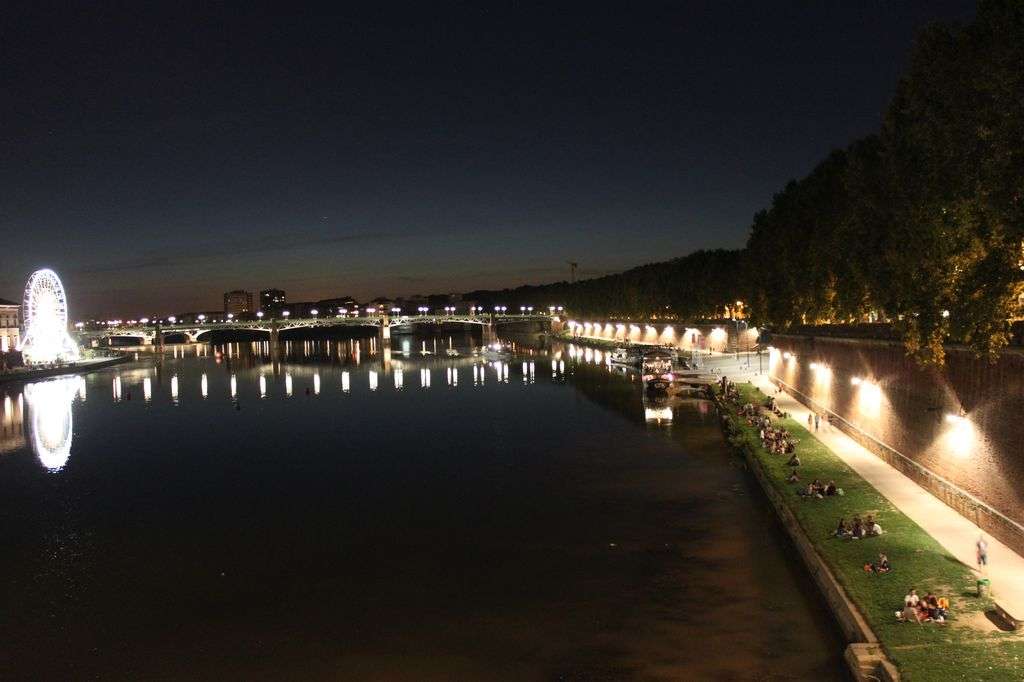

Here are my recent photos of Toulouse, a city situated in the southwest of France on the banks of the Garonne river.
Toulouse is called “the pink city” because, for centuries, it was built almost exclusively using tiles and bricks.
The visit at the Place du Capitole, the central square of the city.
The Capitouls (governing magistrates) of the Toulouse embarked on the construction of the original building in 1190, to provide a seat for the government of a province growing in wealth and influence. The name "Capitole" referred not only to the Capitol of Roma (at the very beginning Toulouse was a roman city) but also to the capitulum which was the chapter of the governing magistrates.
The current façade, 135 metres long and built of the characteristic pink brick in neoclassical style, dates from 1750. The Capitole shelters mural paintings representing some of the major events of the history of Toulouse.







This painting represents the very first session of l’Académie des Jeux floraux ("Academy of the Floral Games") which is the most ancient literary institution of the western world. It was founded in 1323 by Clémence Isaure with the goal of encouraging poetry. It still exists today :









This painting represents pope Urban II entering Toulouse in 1096, he was preaching the first crusade. Raimond IV (represented as the soldier who guides the papal horse), count of Toulouse, became one of the leaders of this crusade.


The 13th Century saw the rise of Catharism, which led to several years of disorder. A siege of Toulouse occurred between October 1217 and June 1218 during Albigensian Crusade. It was third of a series of sieges of the city during the height of Crusader efforts to put down Catharism (and the local Languedocian nobility). It ended in the repulsion of the Crusaders and the death of their leader, Simon IV de Montfort; hit on the head by a stone from one of the defenders' siege engines maneuvered by a woman.

Paule de Viguier (1518-1610) was widely considered to be the most beautiful woman of her time. The Maréchal de Montmorency called her “one of the marvels of the universe.” At the age of 15, she produced a strong impression on king François I visiting Toulouse, he gave her the nickname of “Belle Paule” (beautiful Paule).
The Capitouls of Toulouse, under popular pressure, had to oblige her to appear at regular intervals at her balcony to calm the heated spirits. Posterity has not left us with any portraits of her. This one can be found in the Capitole in the “Salle des Illustres.”, it was painted by Henri Rachou in 1882. One never knows if it reflects the truth.

Only the Henri IV courtyard and gate survive from the original medieval buildings.

Saint Sernin basilica is one of the biggest remaining romanesque church in the western world. It was built mainly between years 1080 and 1120. It is said to have the most important collection of relics of Europe, including that of Saint Saturnin, the martyred bishop of the city, to whom the church is devoted. Few Romanesque cathedrals have remained intact as St Sernin.
This monument is an essential stage on the Saint-Jacques-de-Compostelle pilgrimage.


The tympanum of the Porte Miegeville. It depicts the Ascension in quite a literal manner, with angels hoisting Christ up into heaven by the waist. Below, the apostles look up in wonder while two angels explain that he will return from heaven in the same way :






Romanesque paintings that were only discovered in the 1970s, when the 19th-century plaster was removed from the walls :




15th century paintings :


A romanesque Christ, notice that every foot has its nail :

THE GARONNE RIVER
The Pont neuf (New bridge) is the oldest of the city. It was built from 1542 to 1632 and for centuries was the only bridge of Toulouse capable of resisting the violent floods of the Garonne.





















Here is a bridge which didn’t resist the Garonne :










| Рубрики: | Франция ПАРИЖ |
| Комментировать | « Пред. запись — К дневнику — След. запись » | Страницы: [1] [Новые] |






